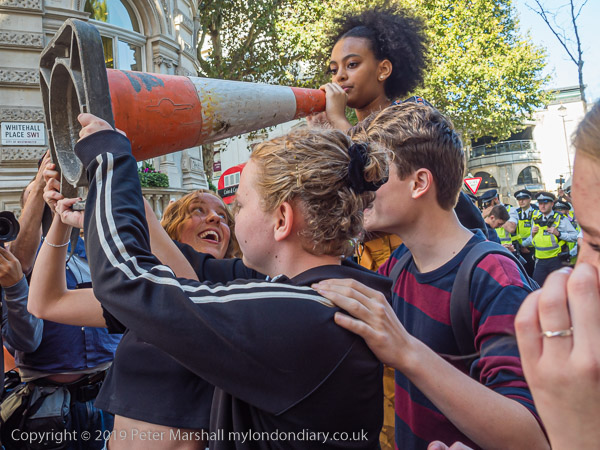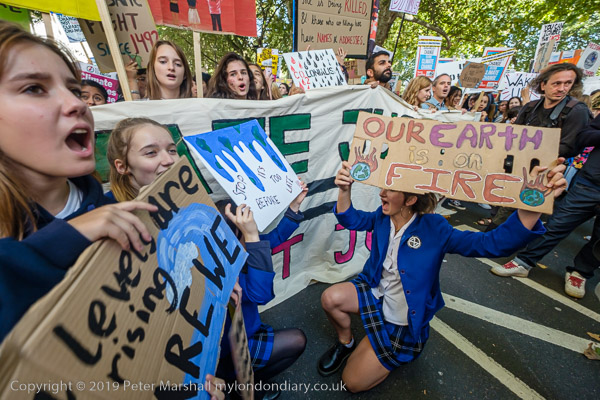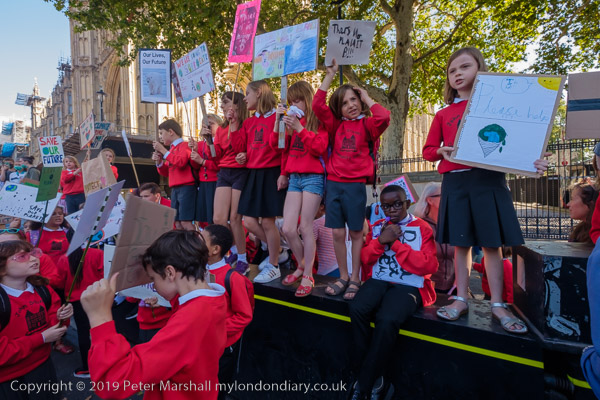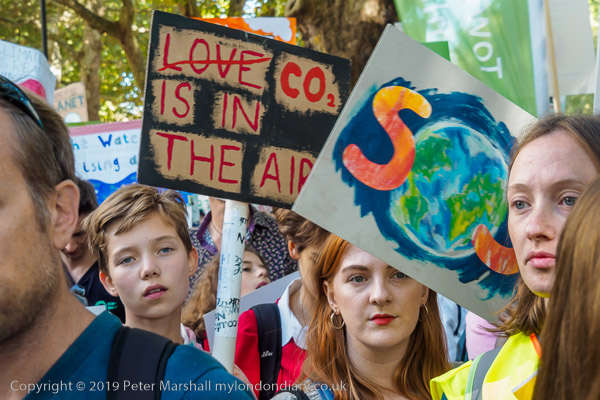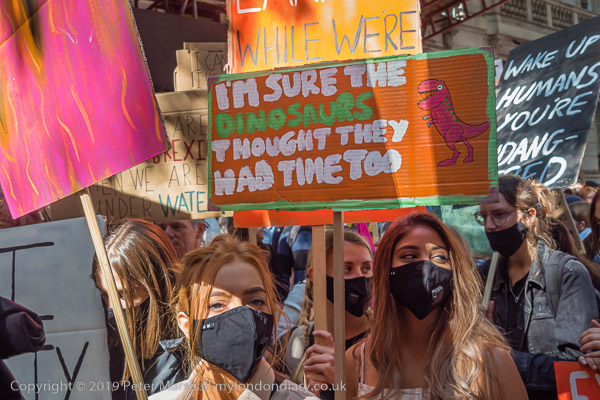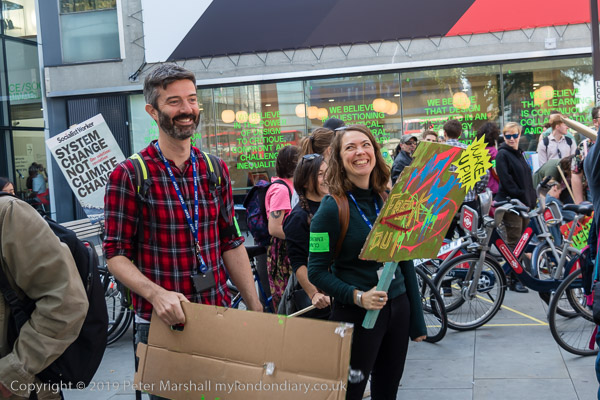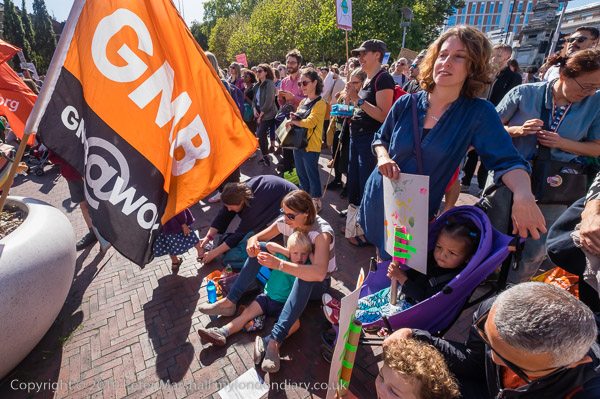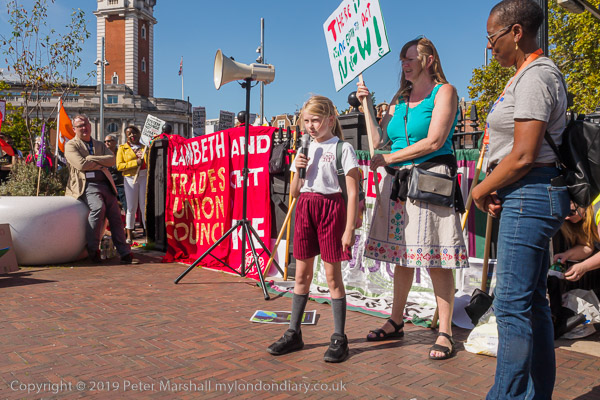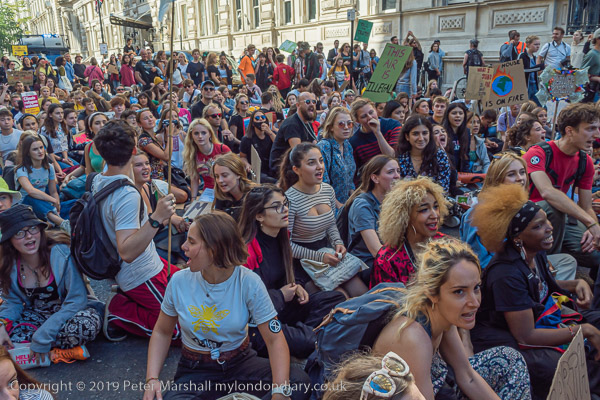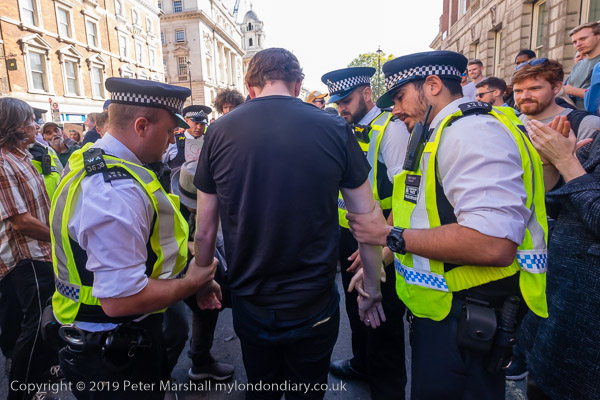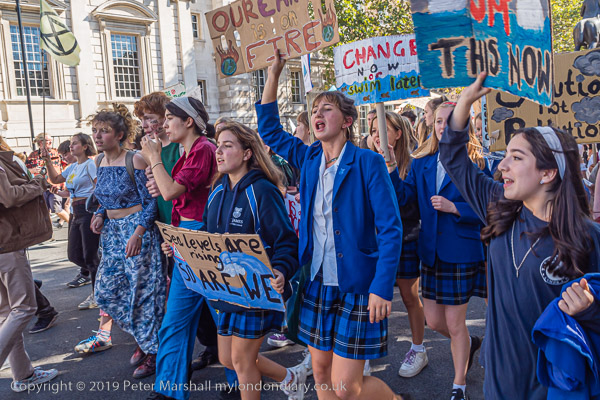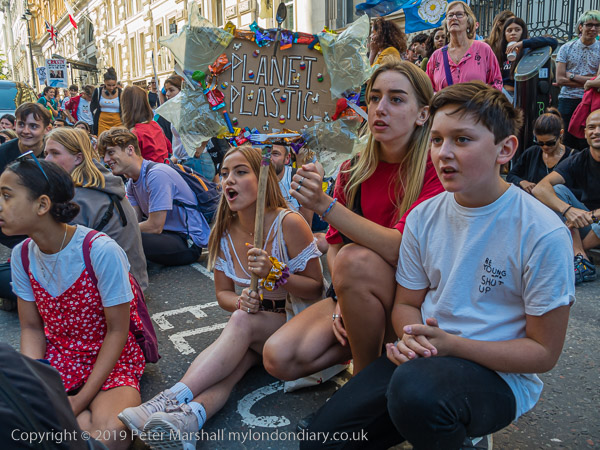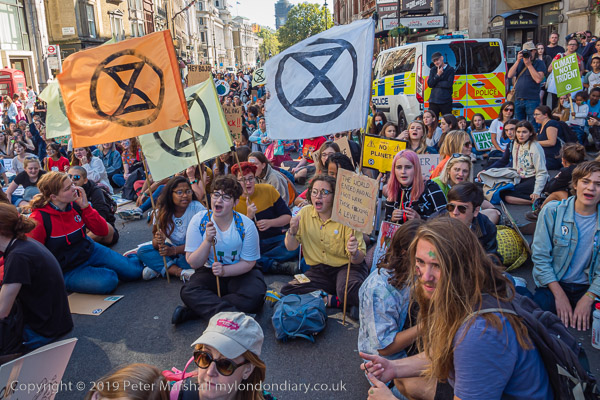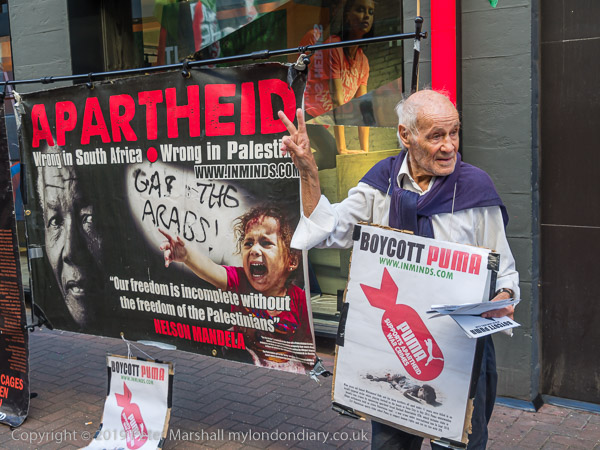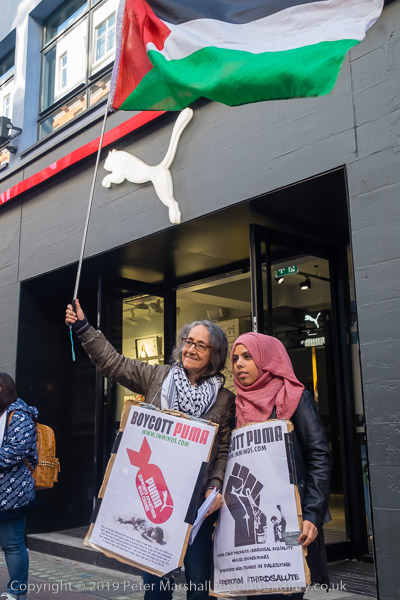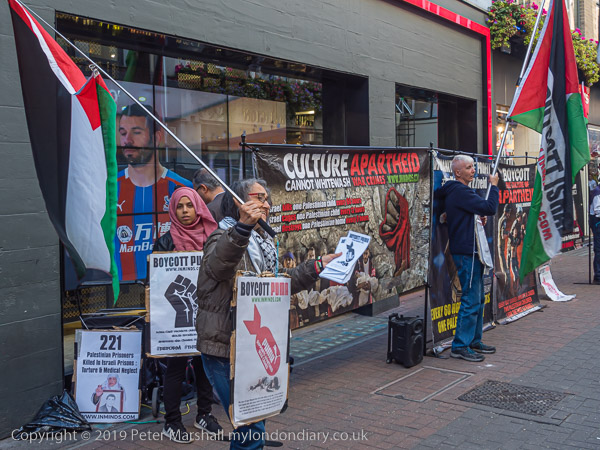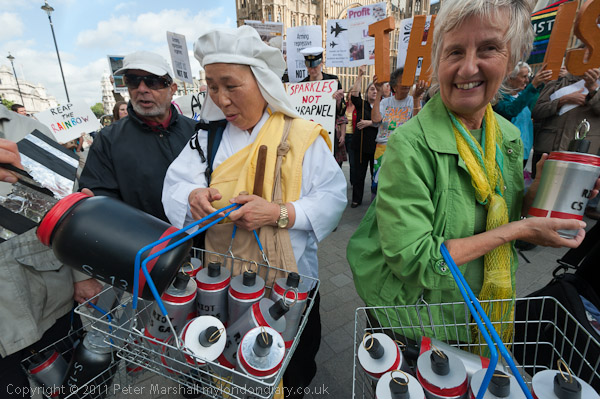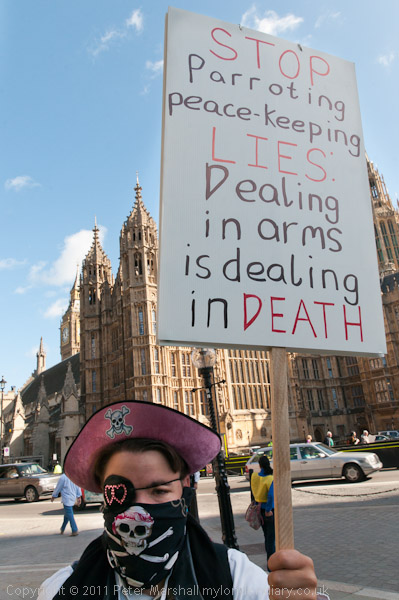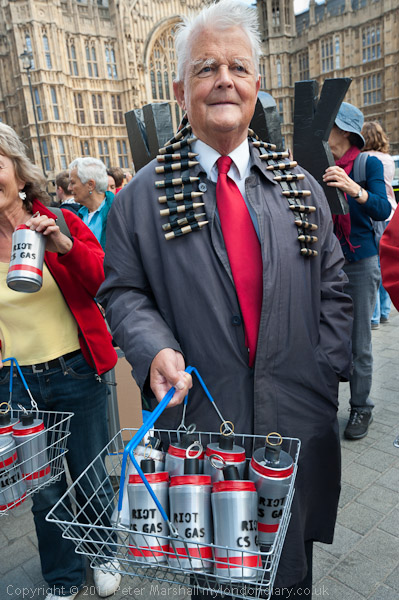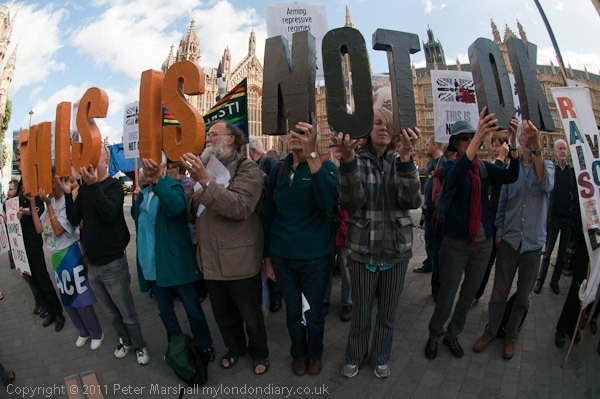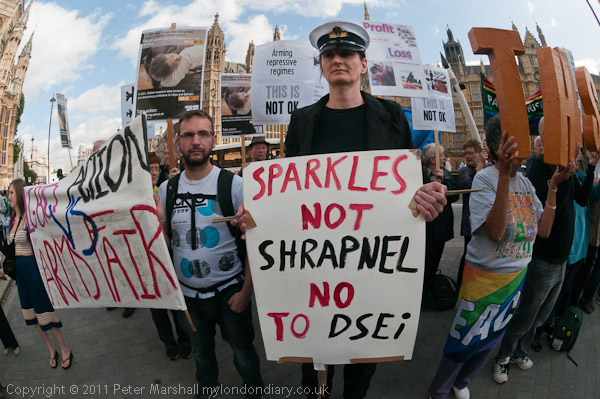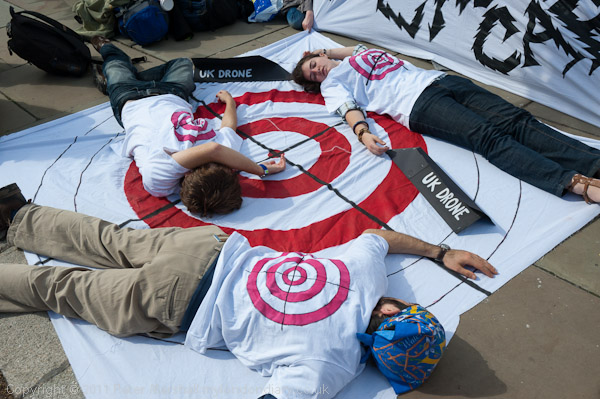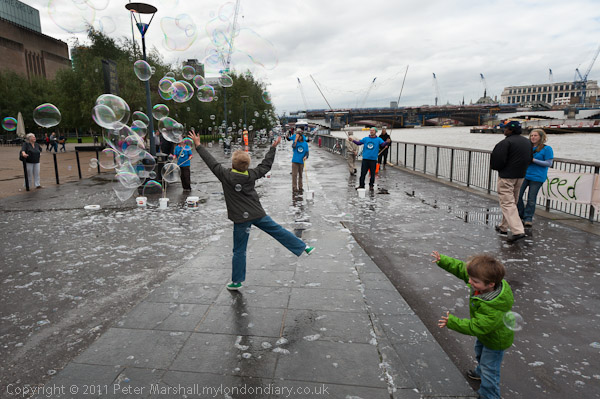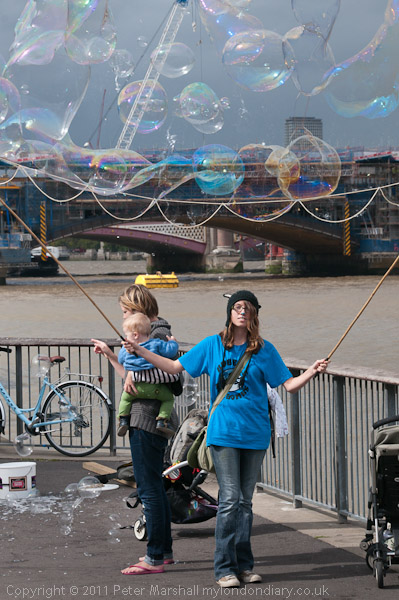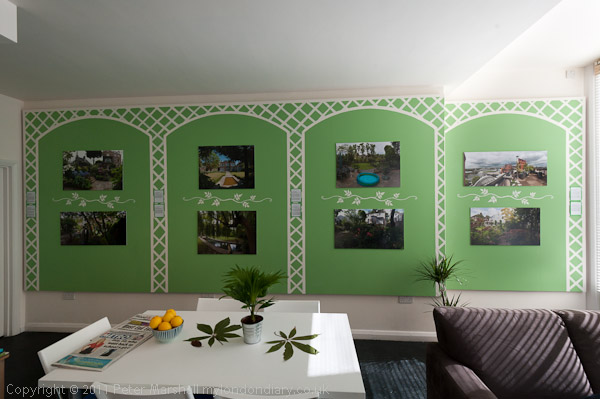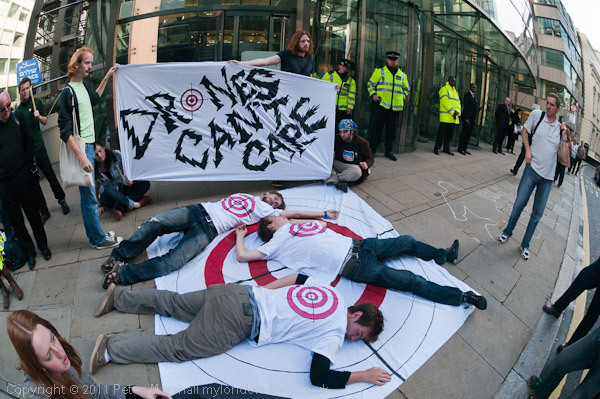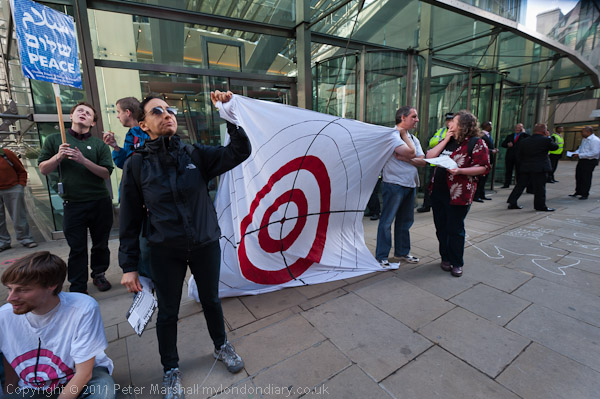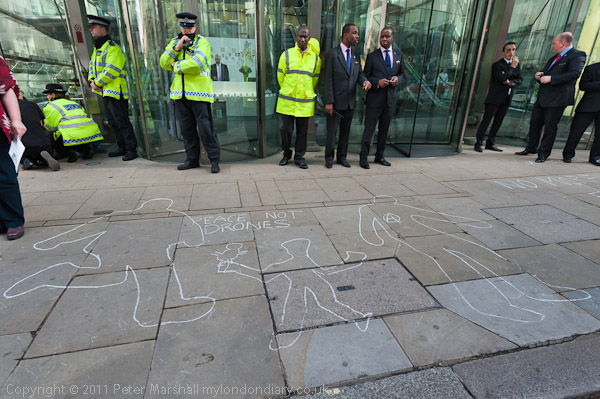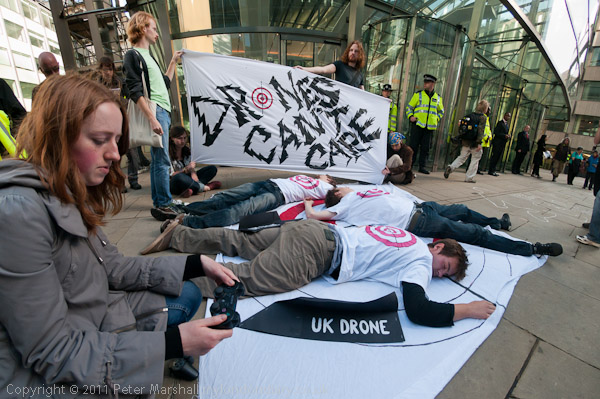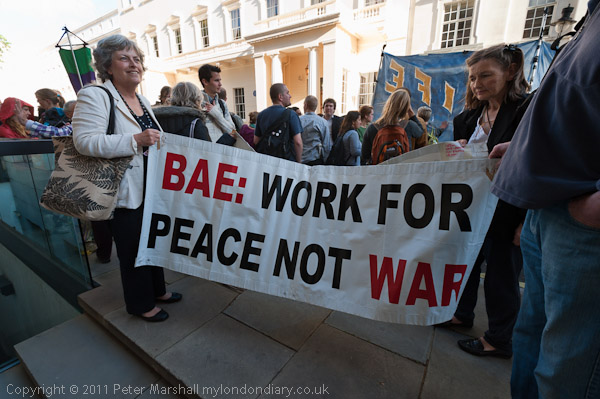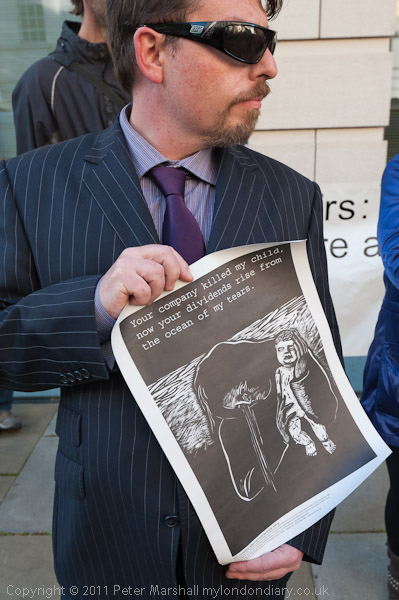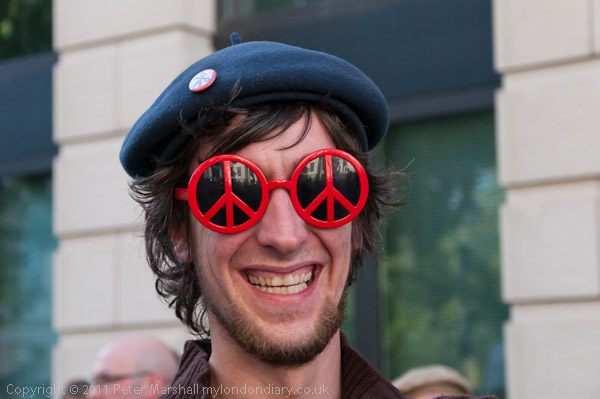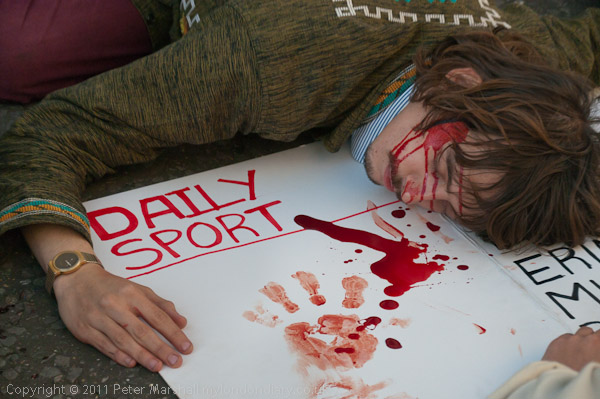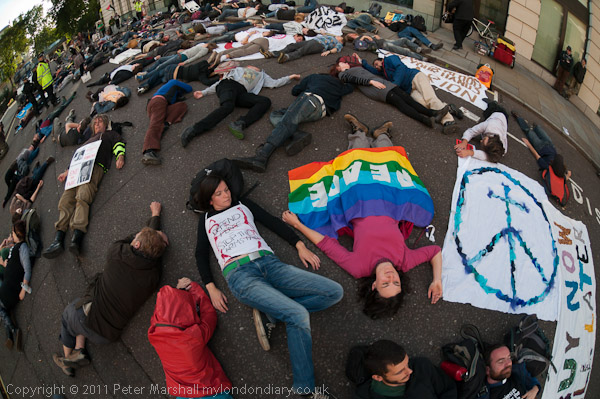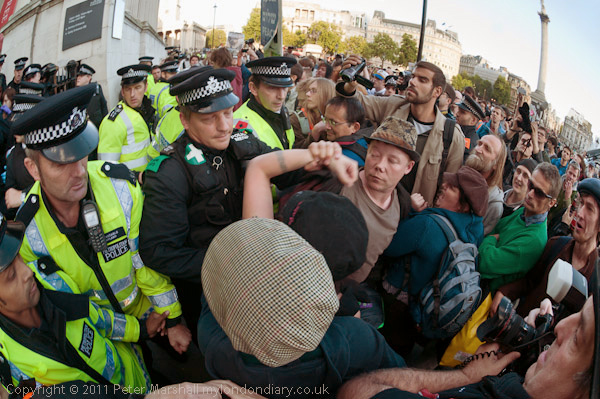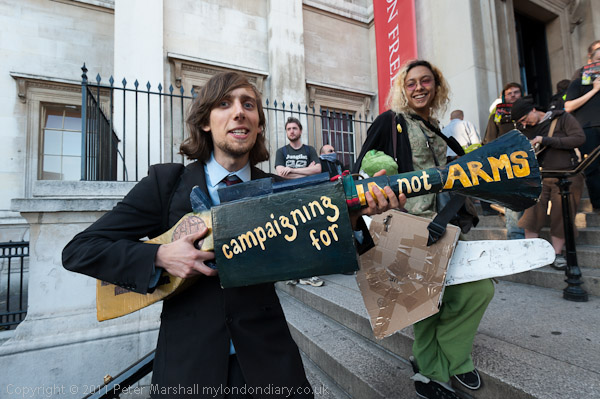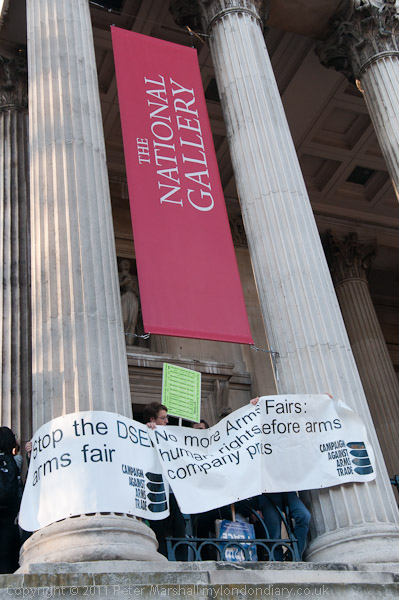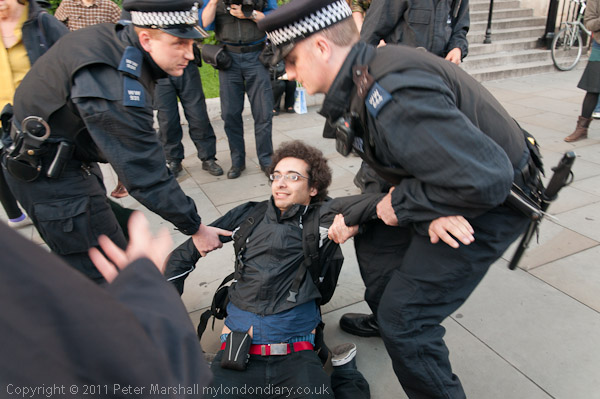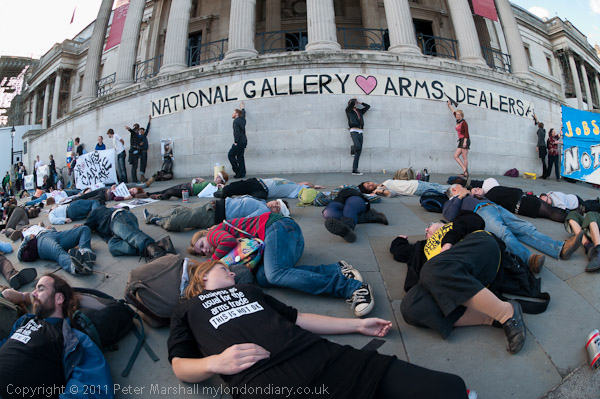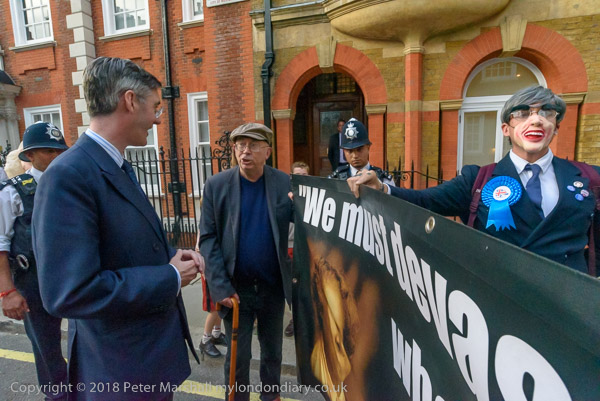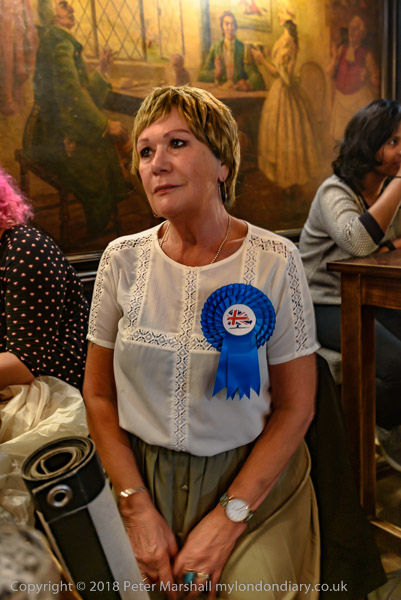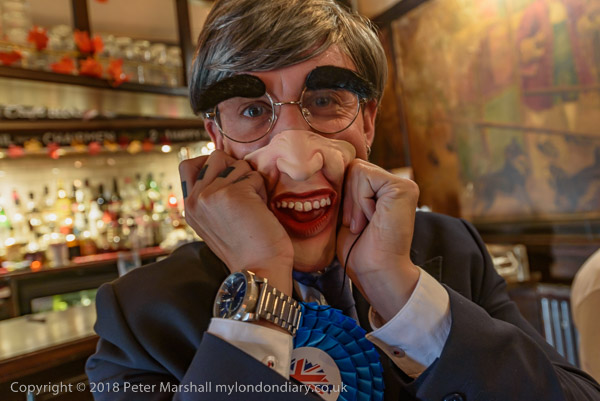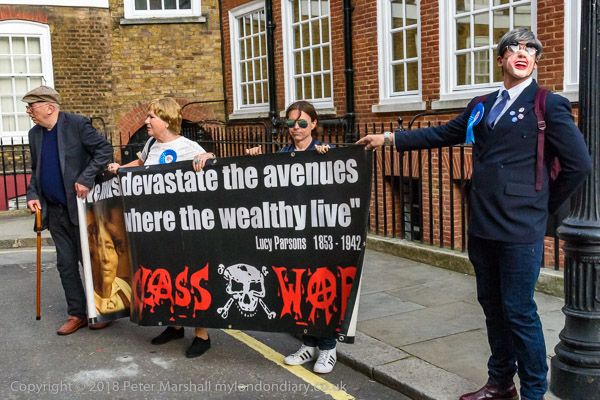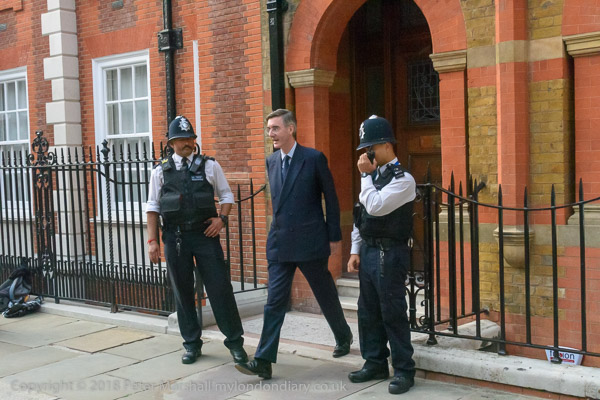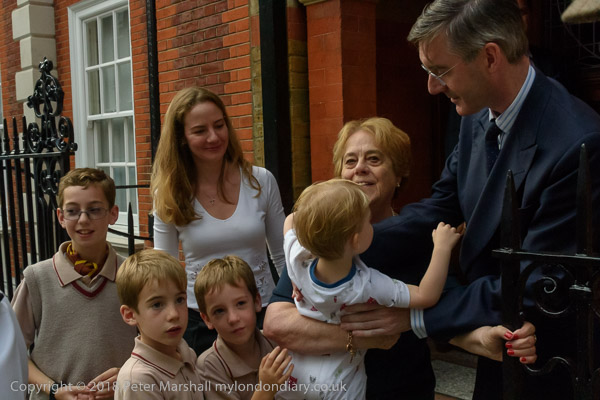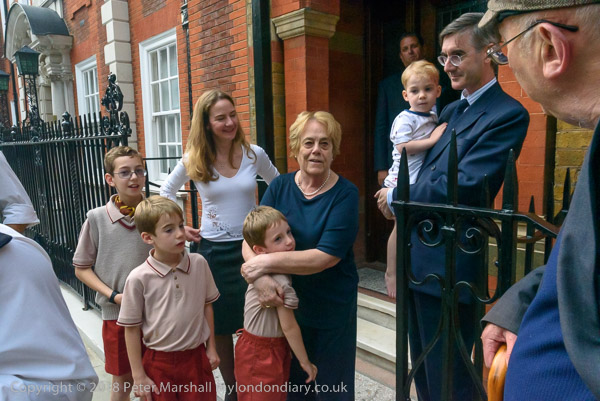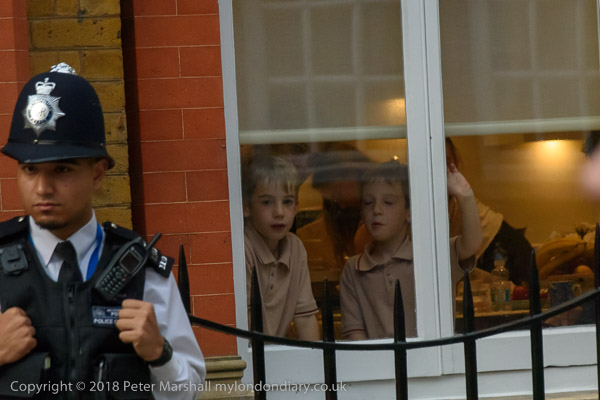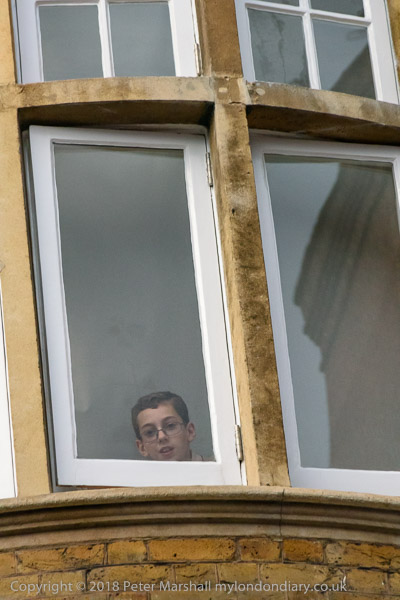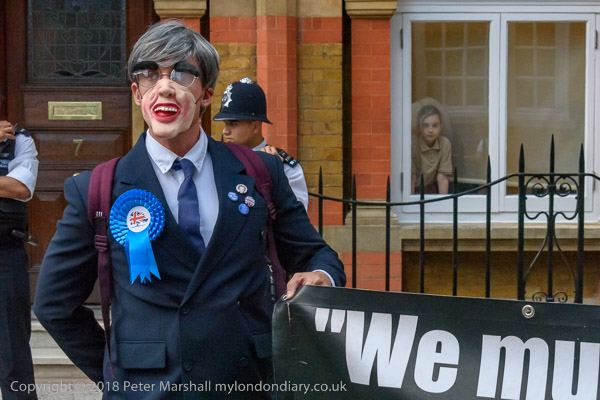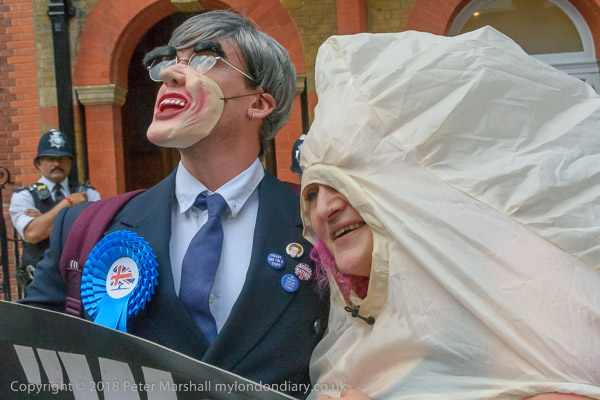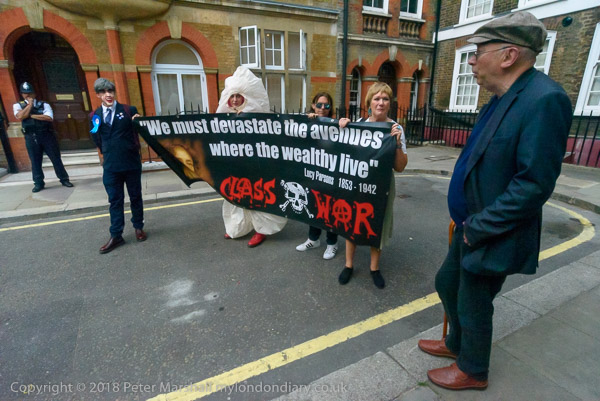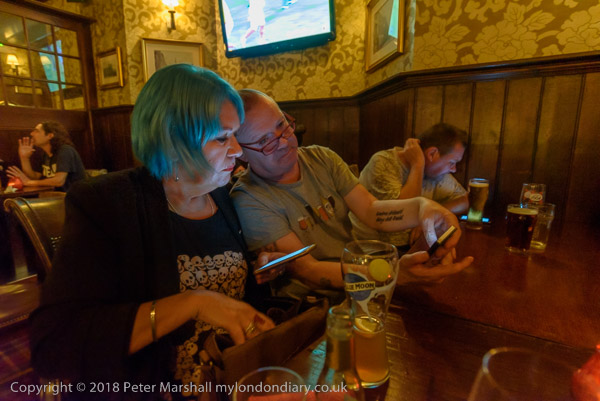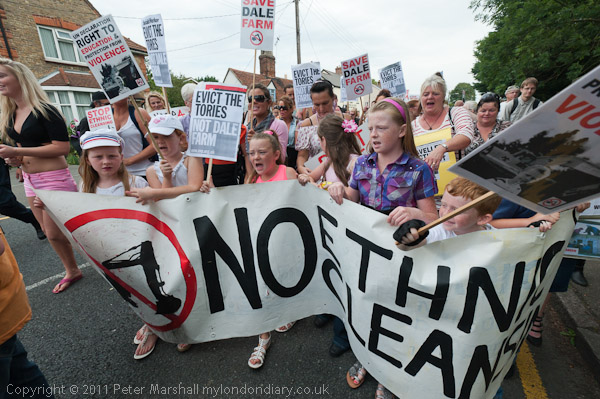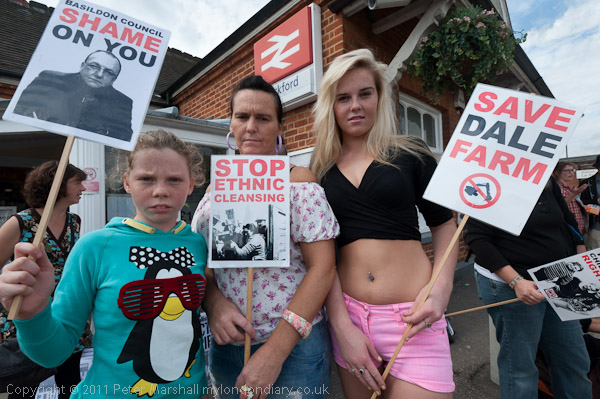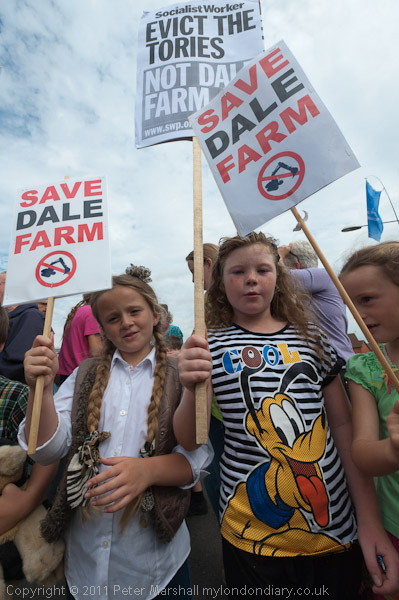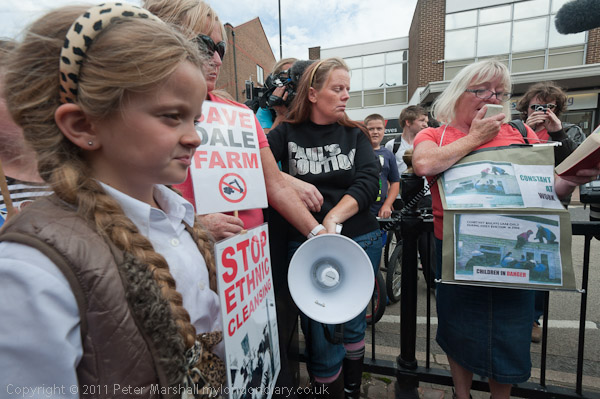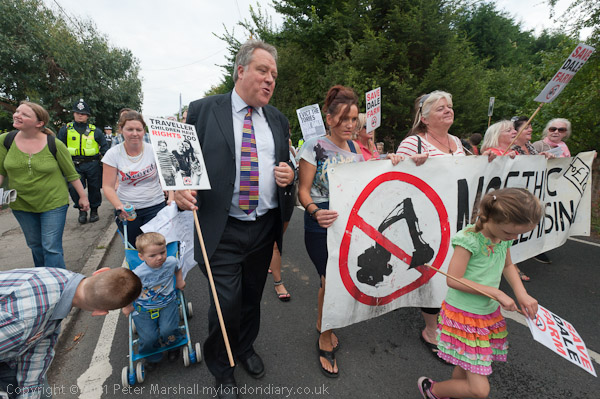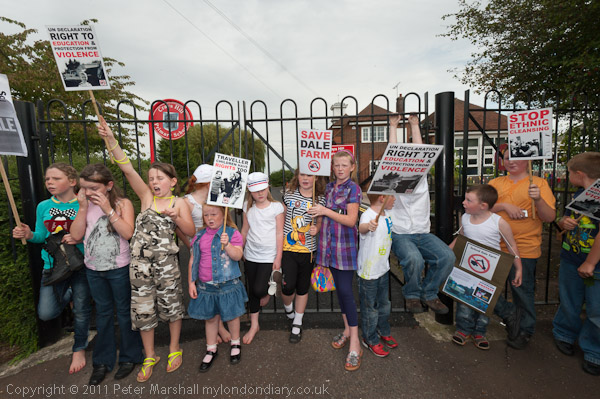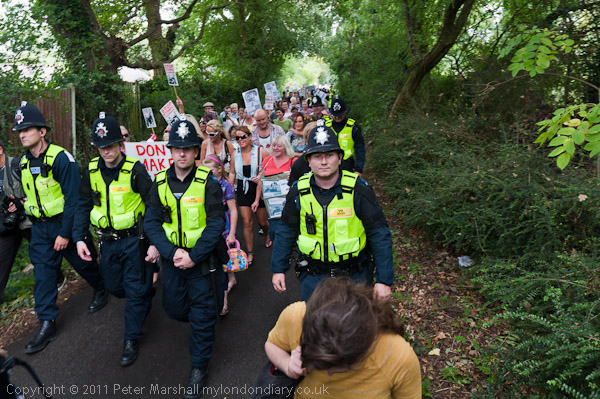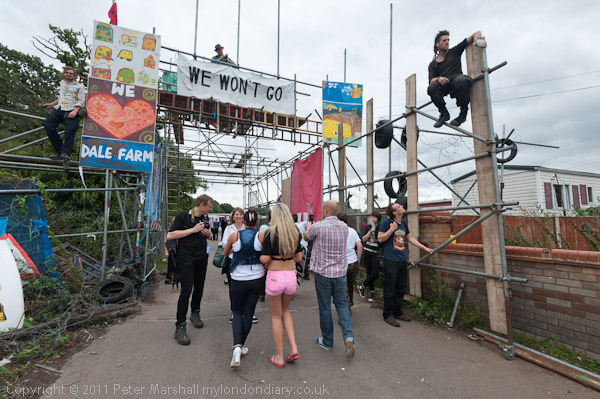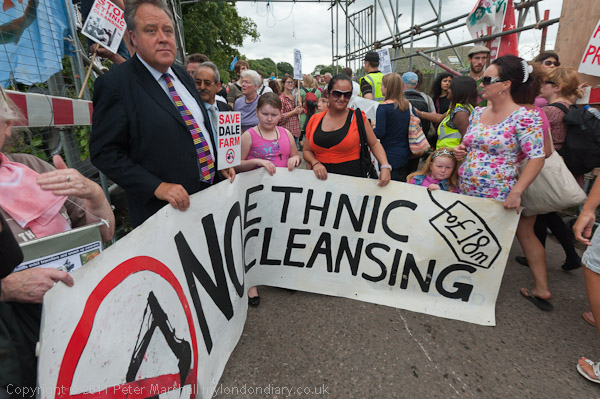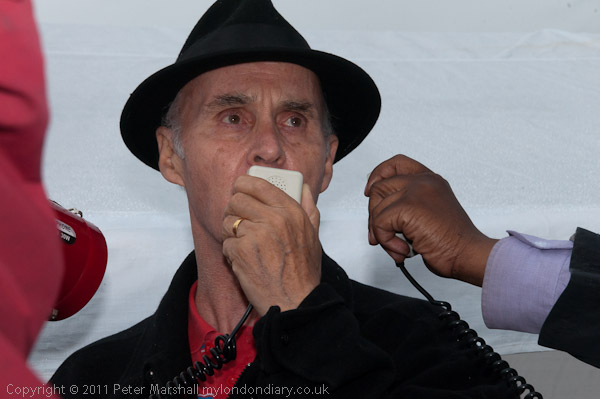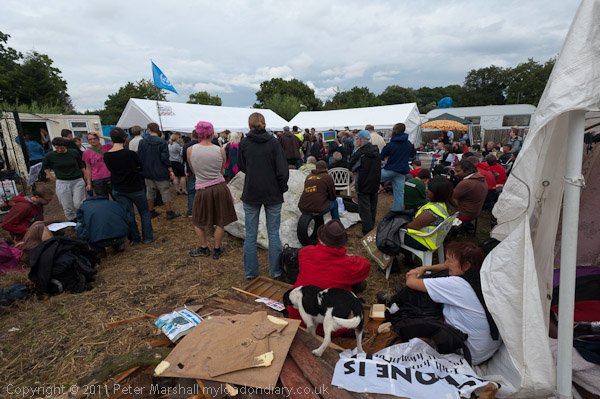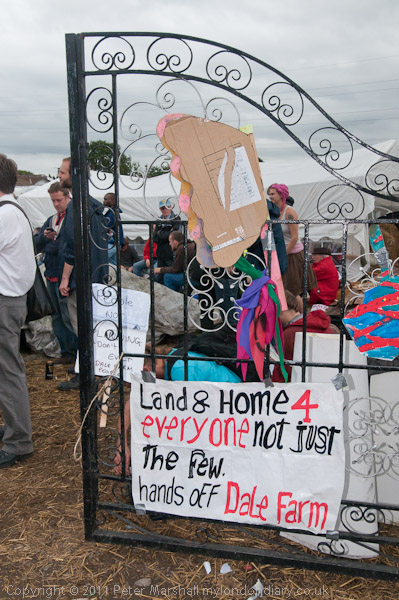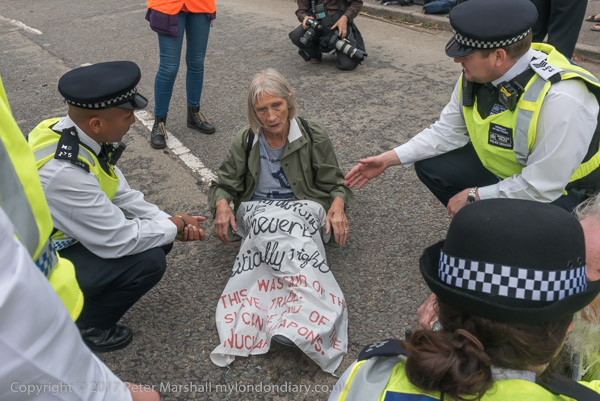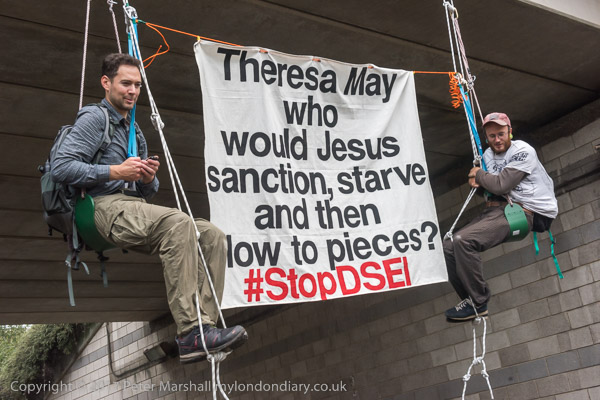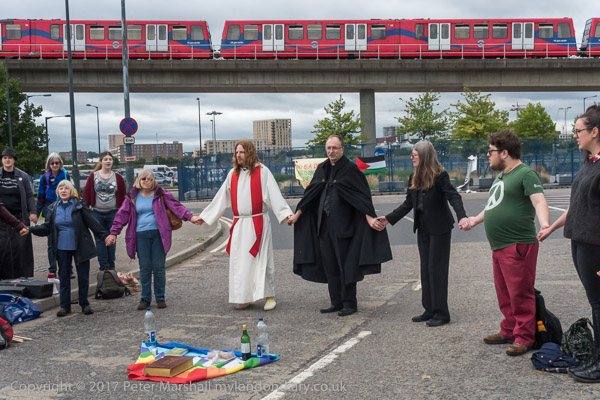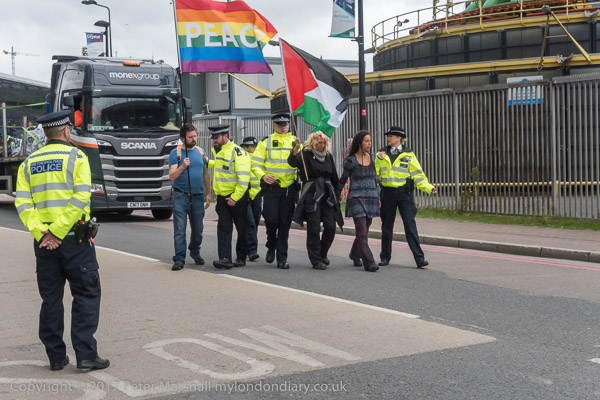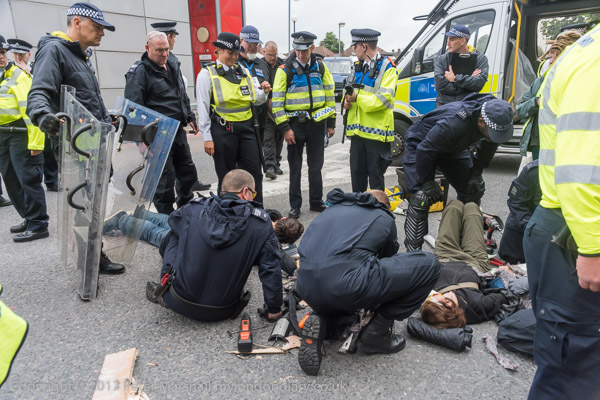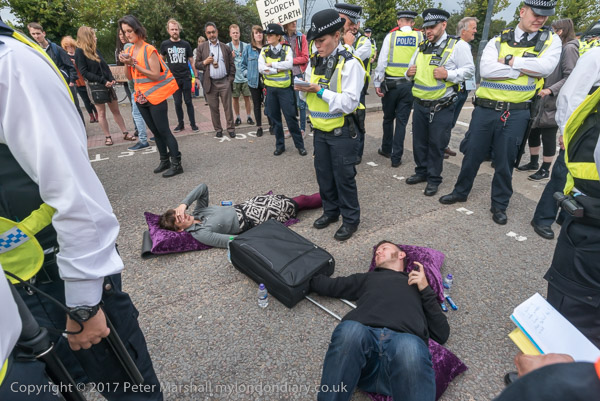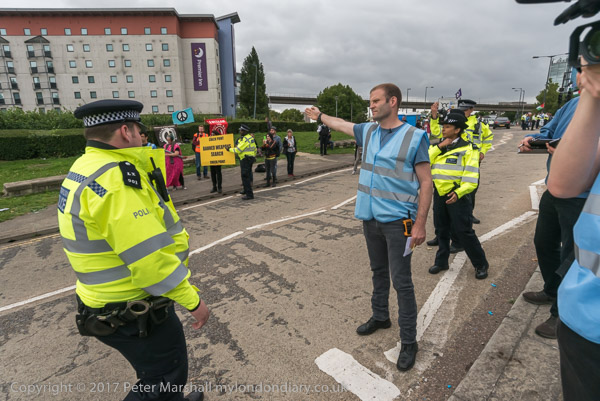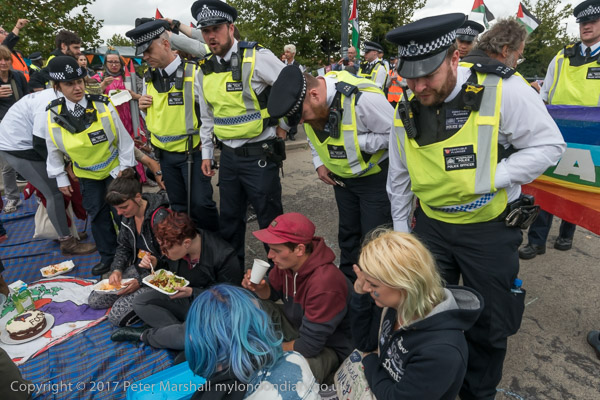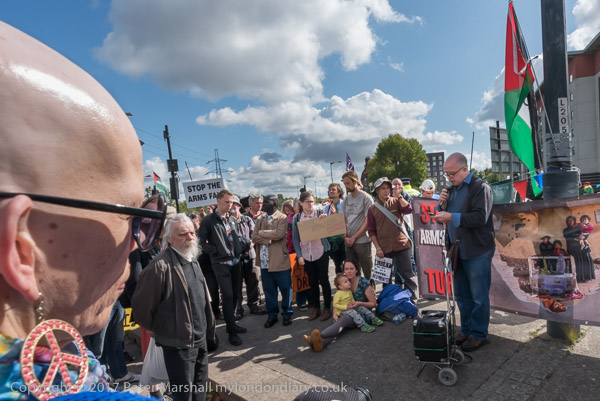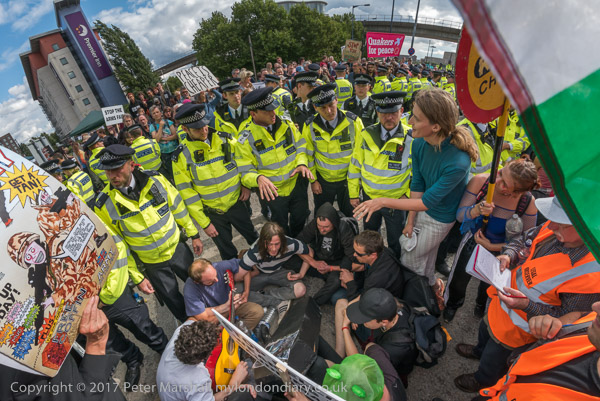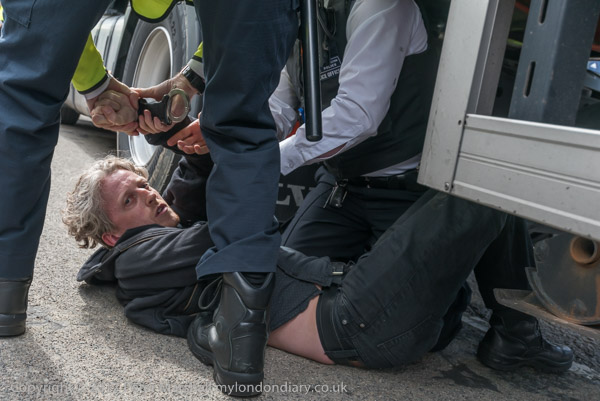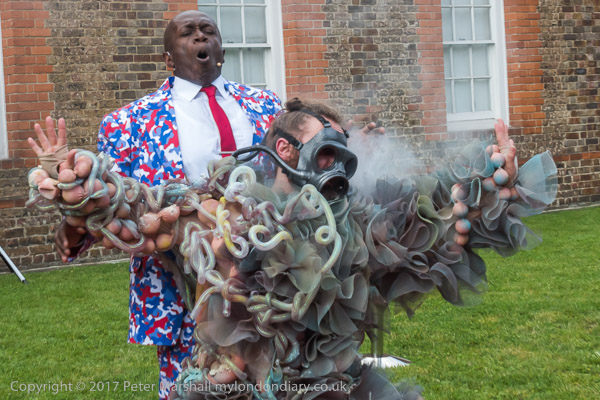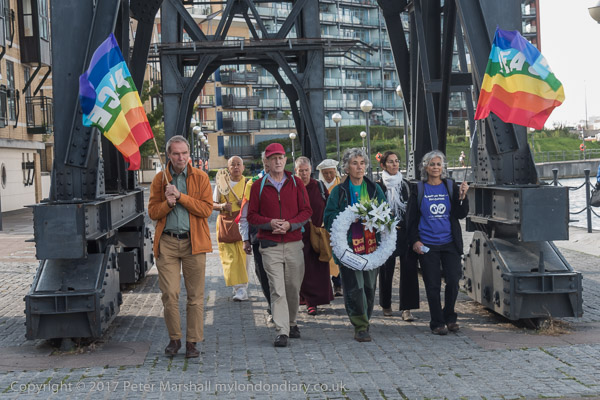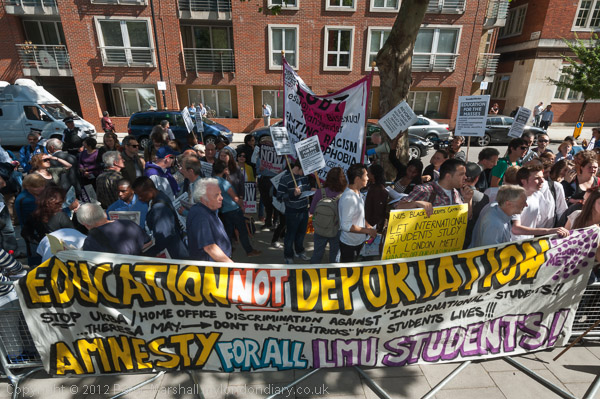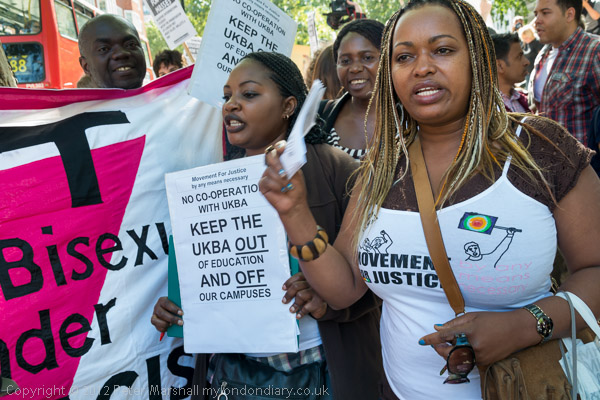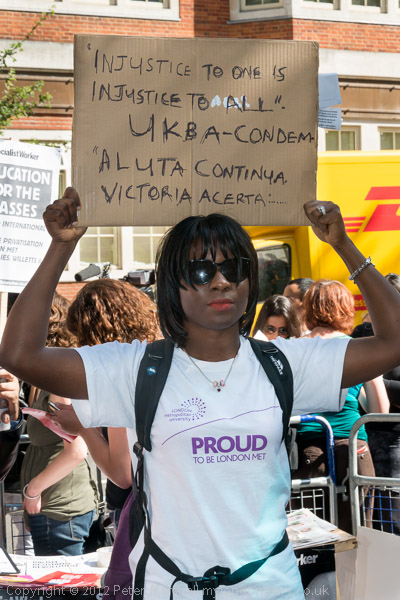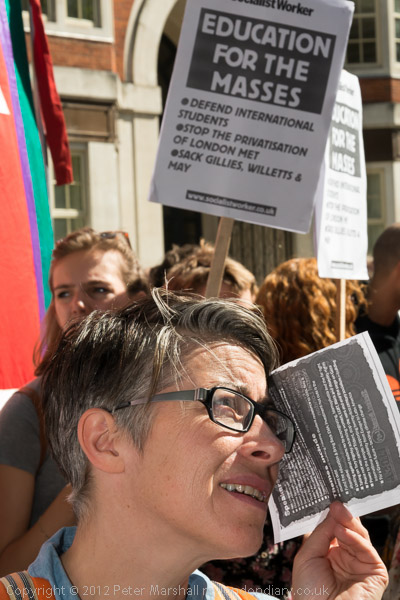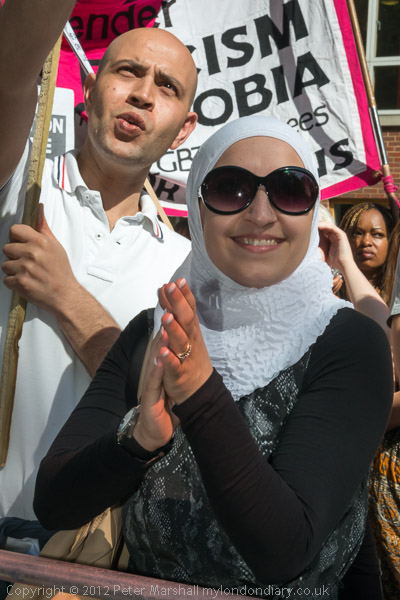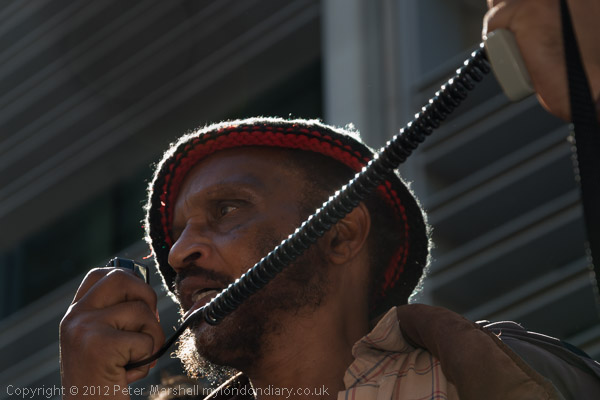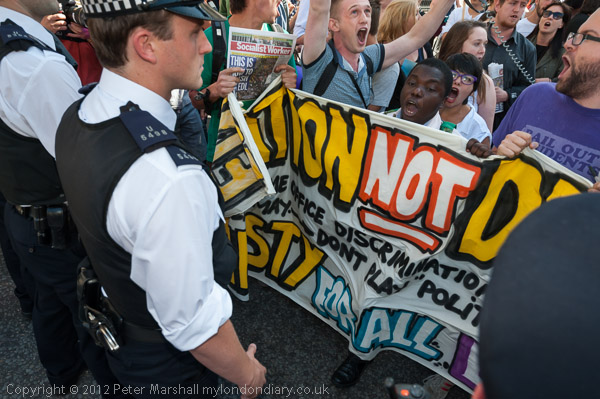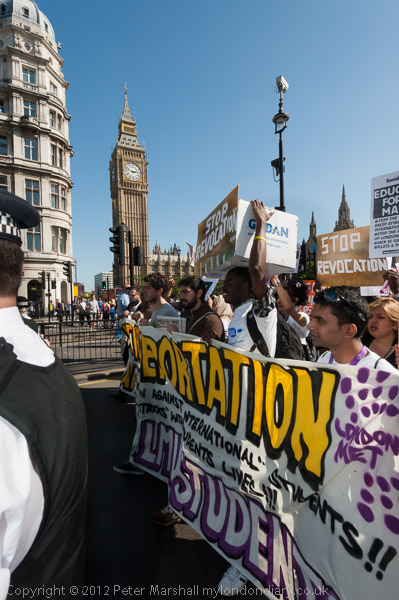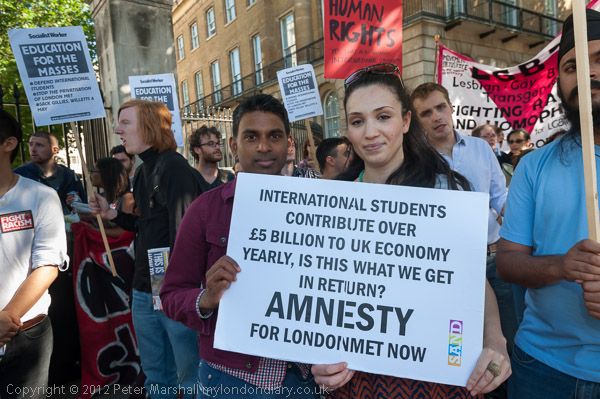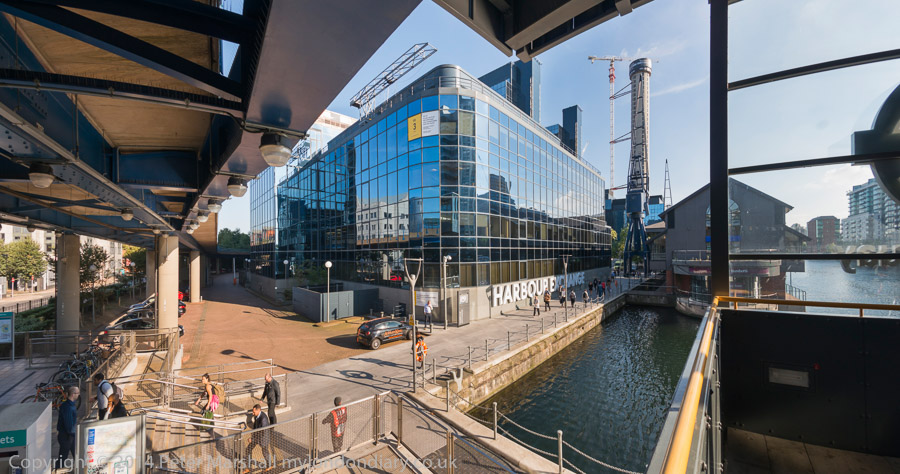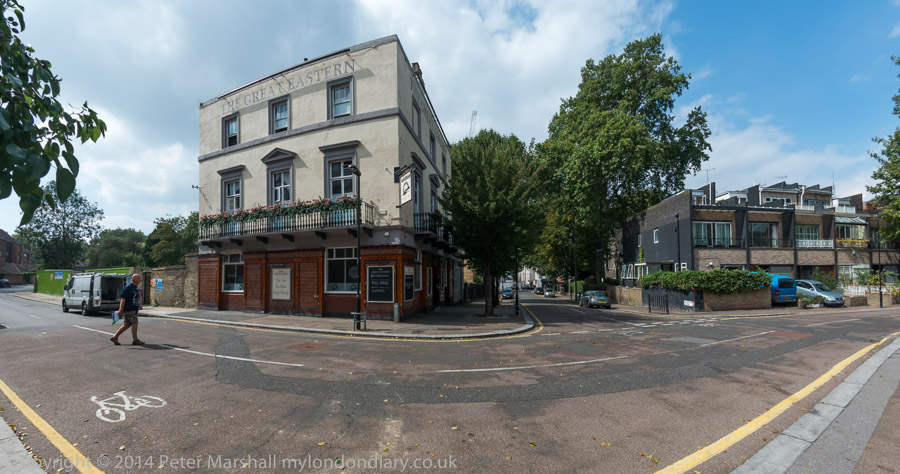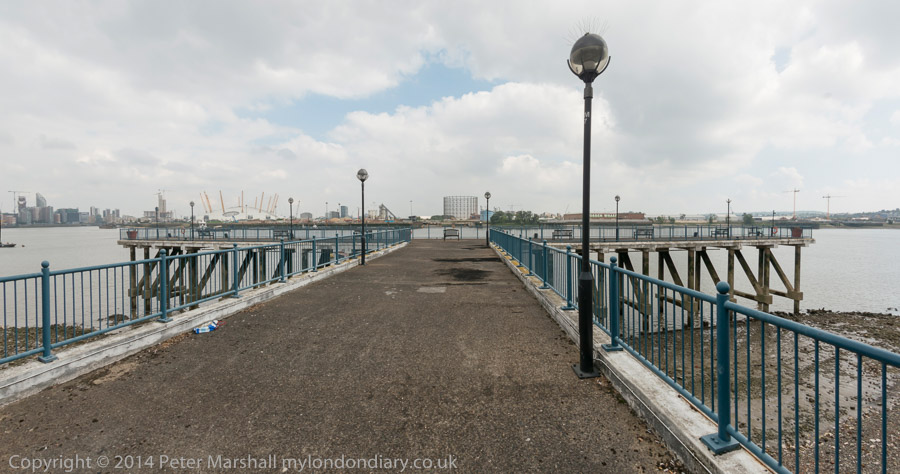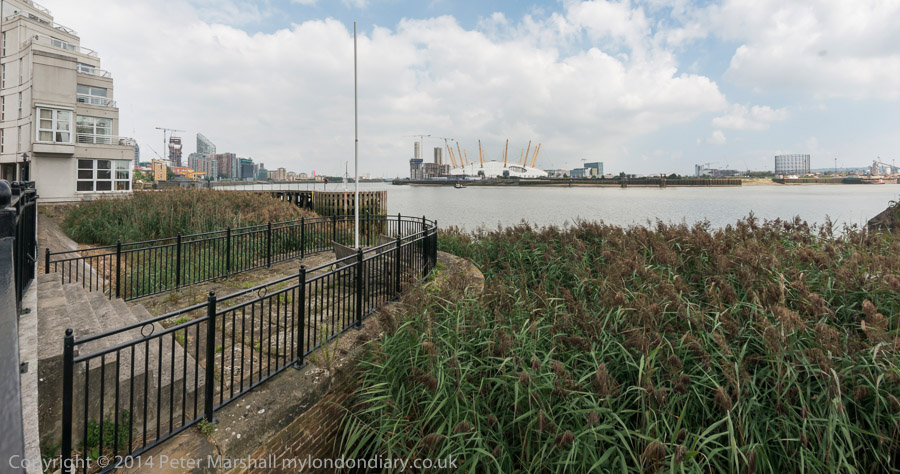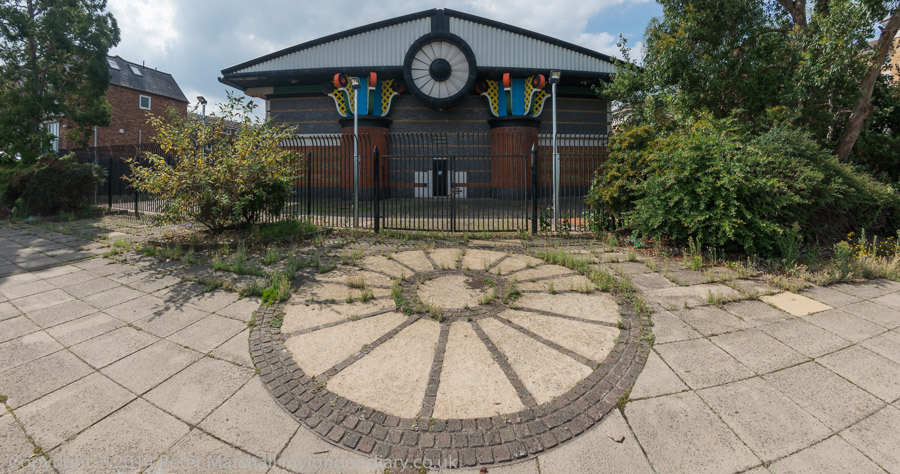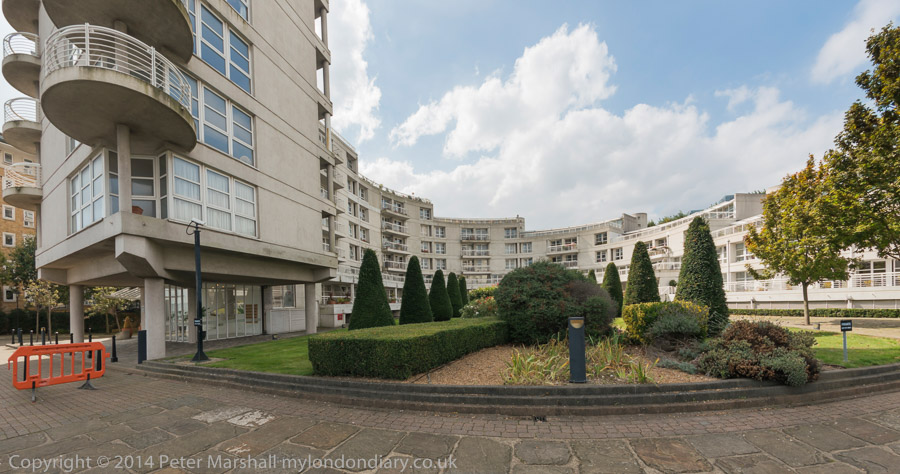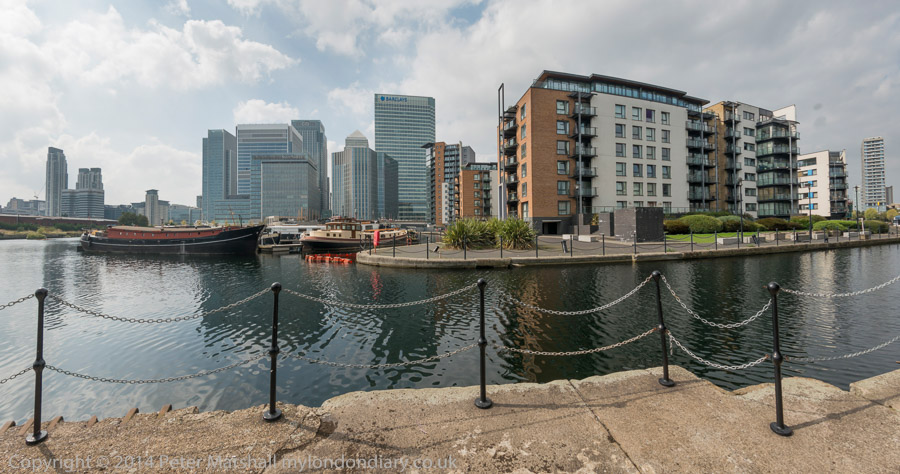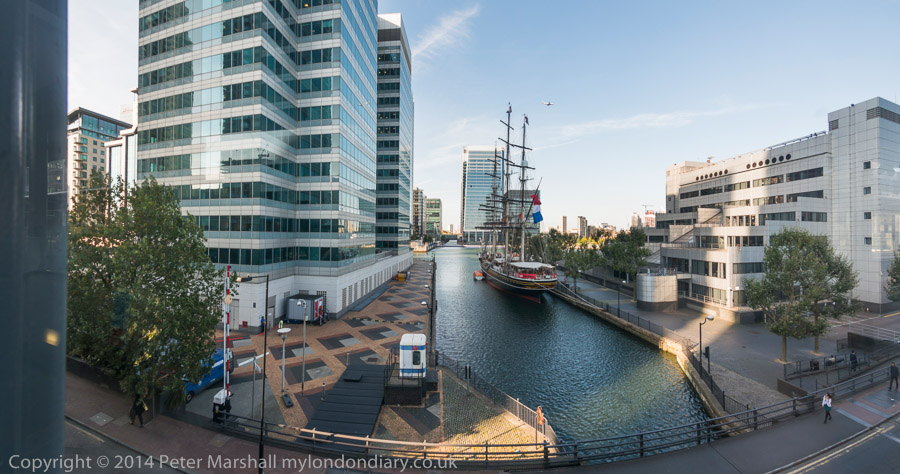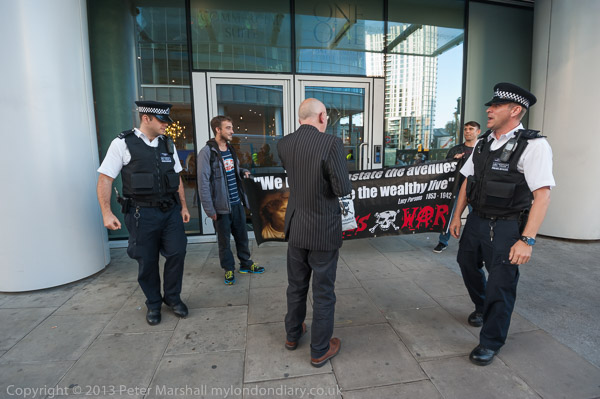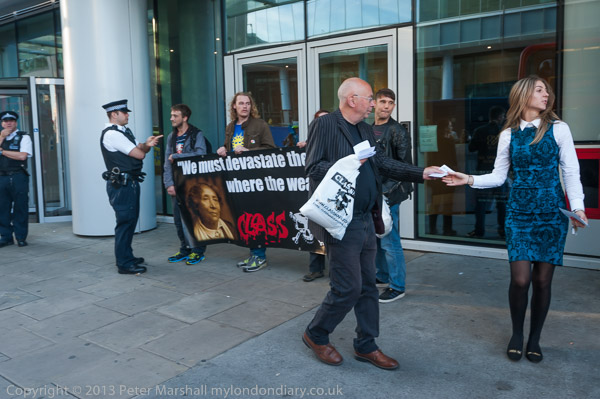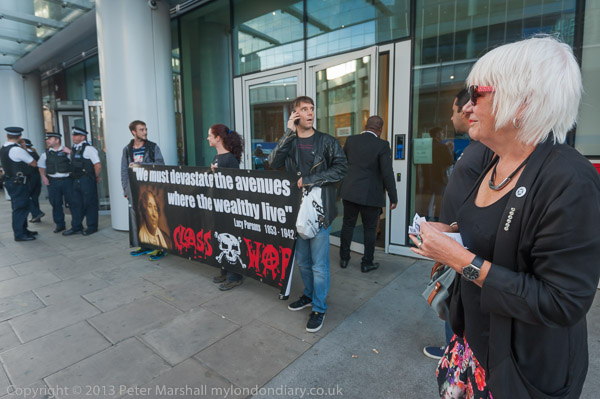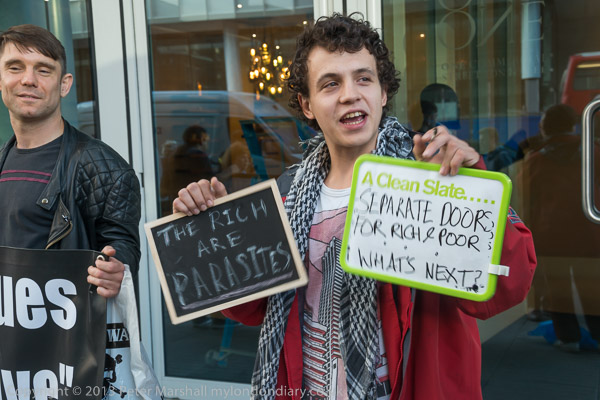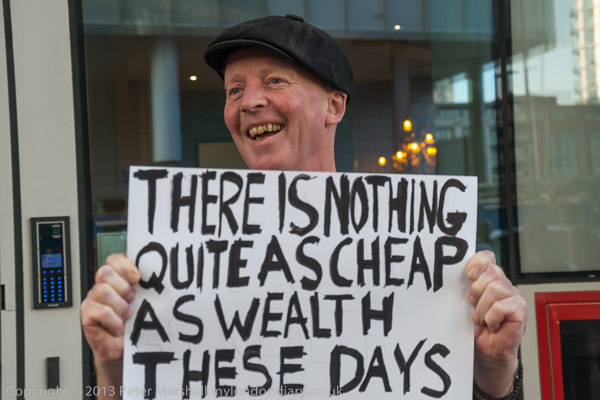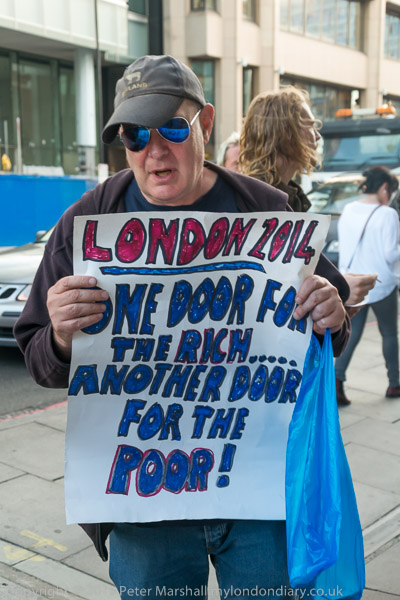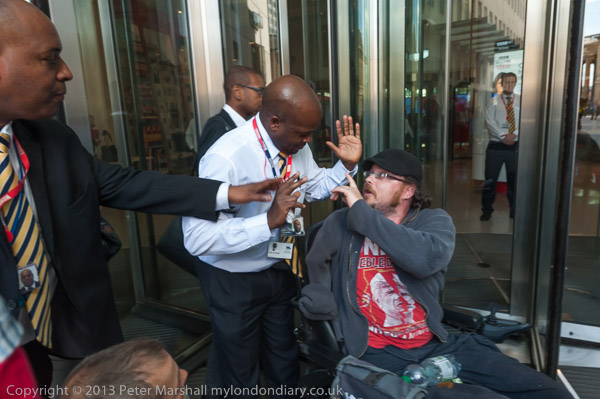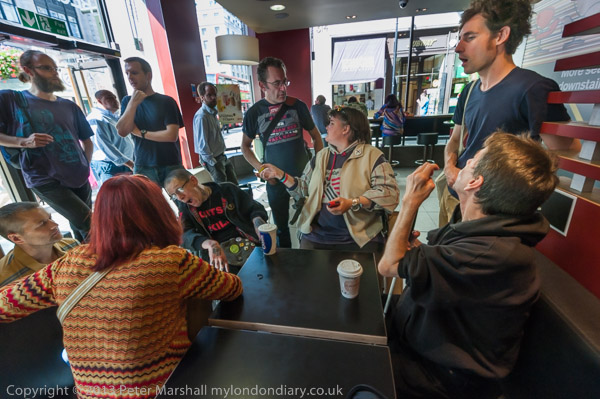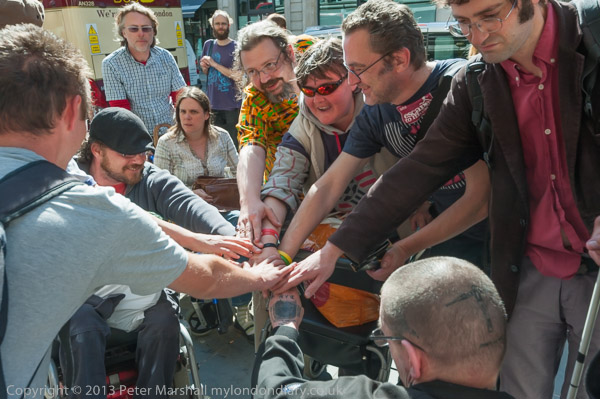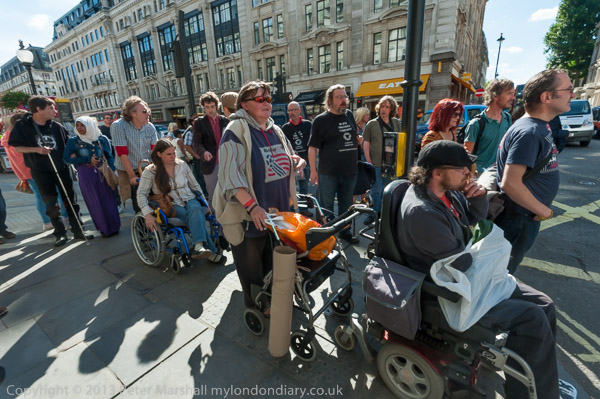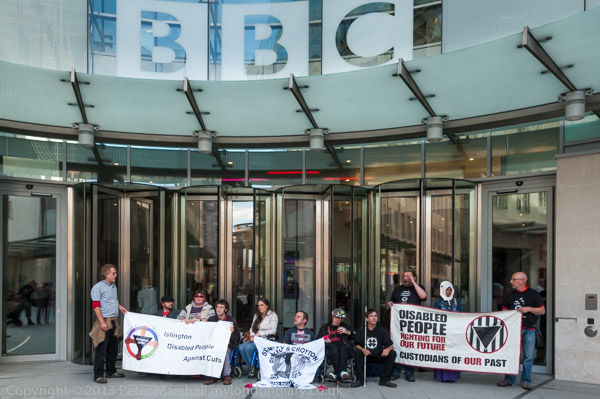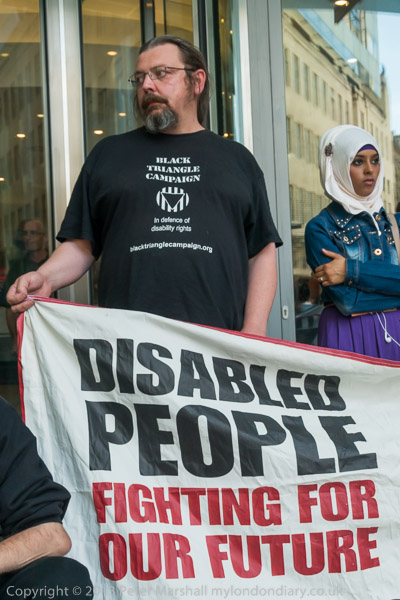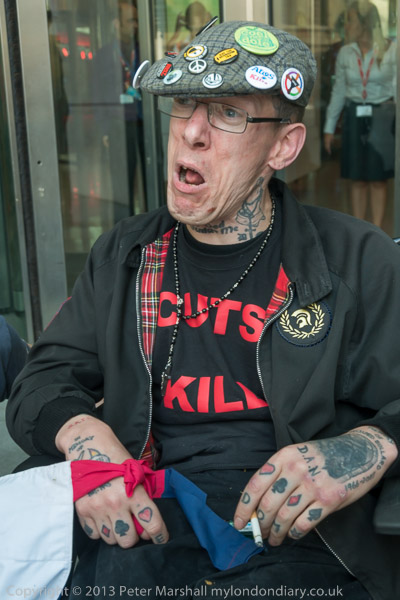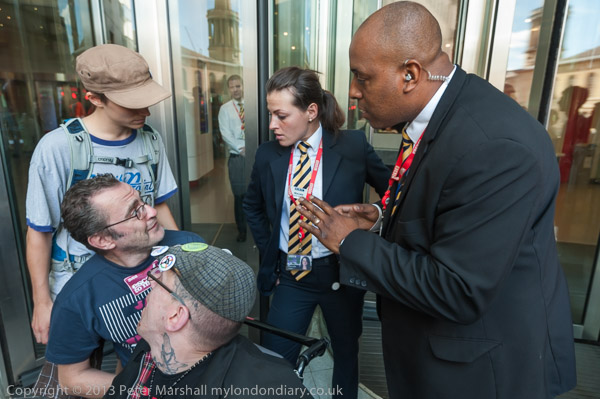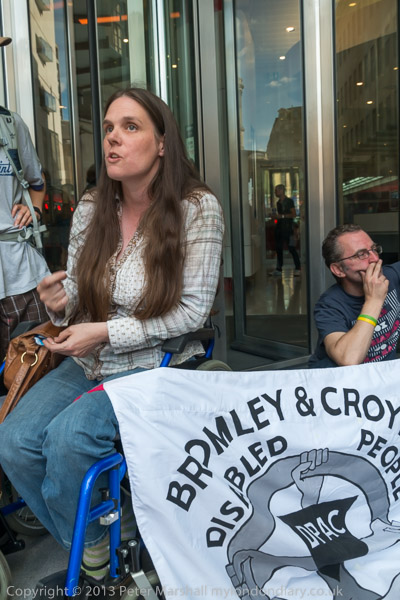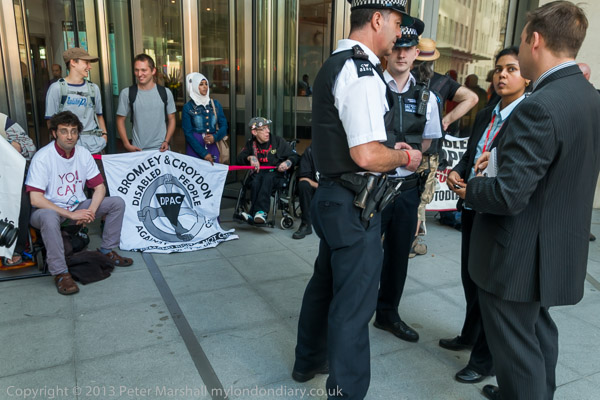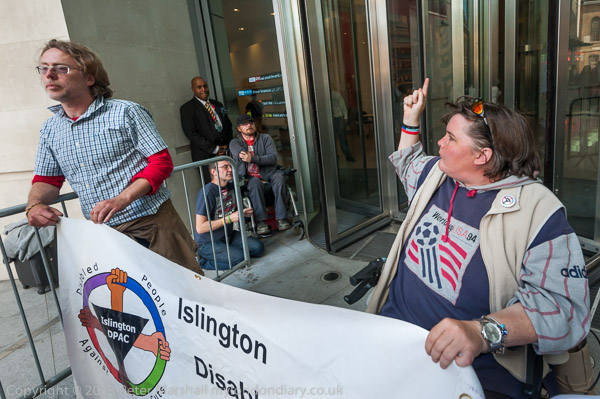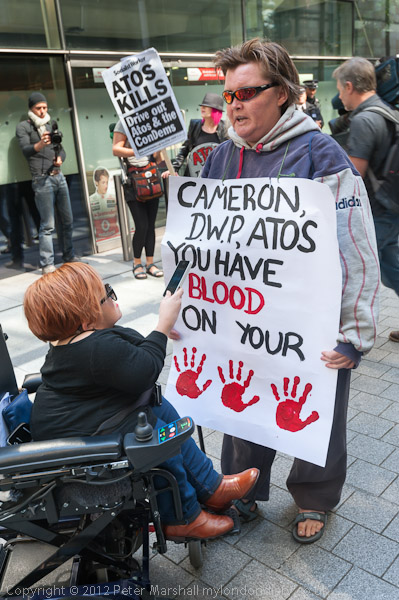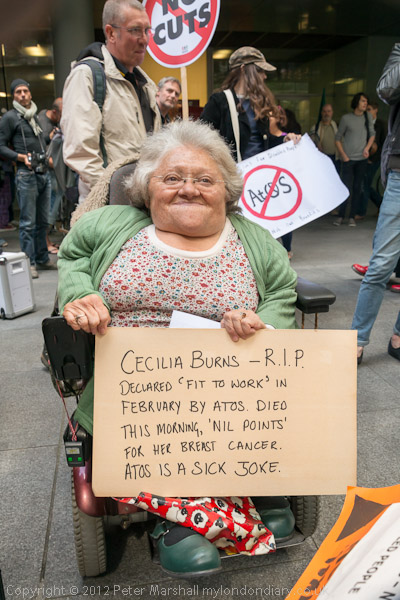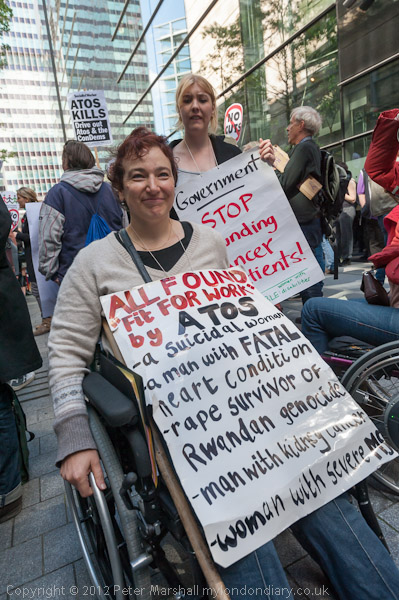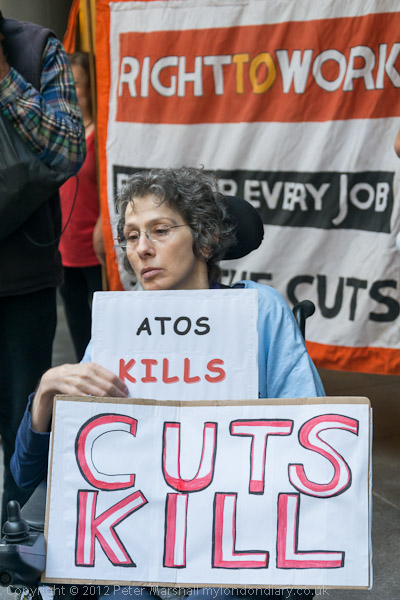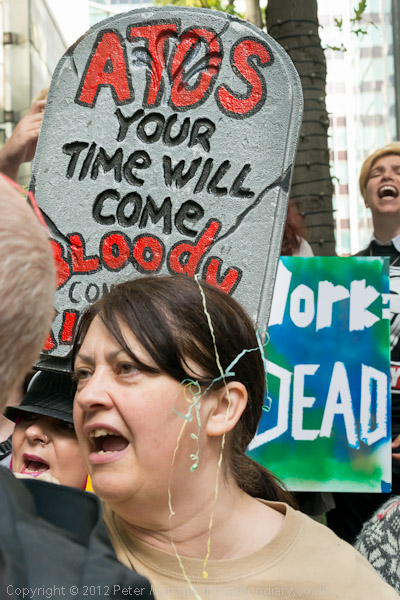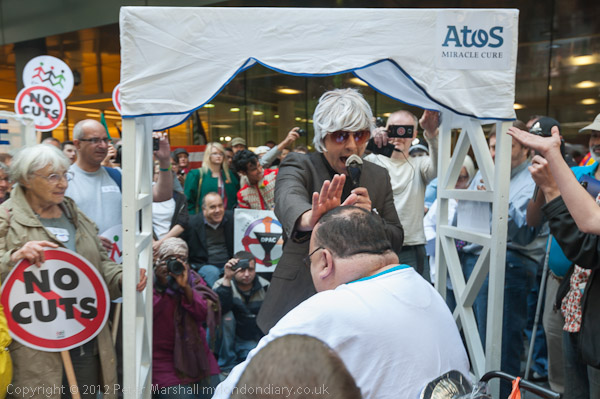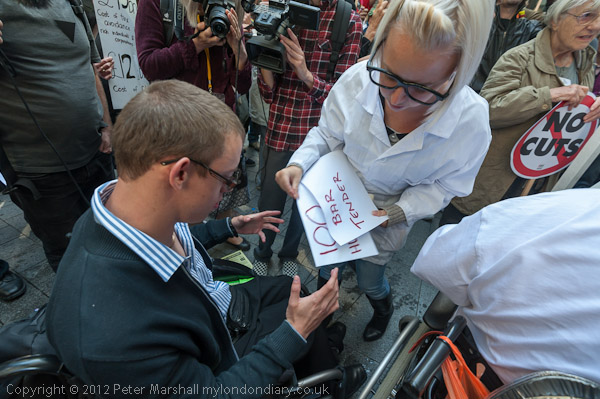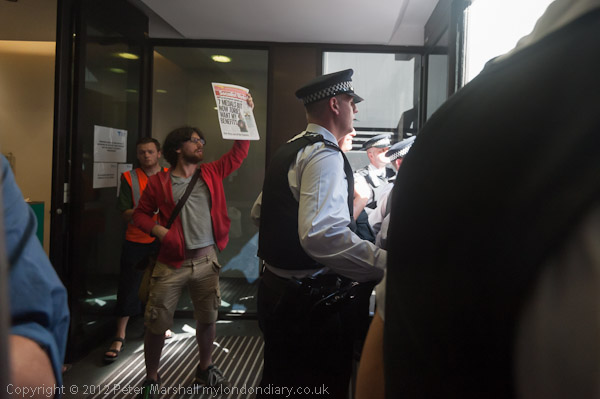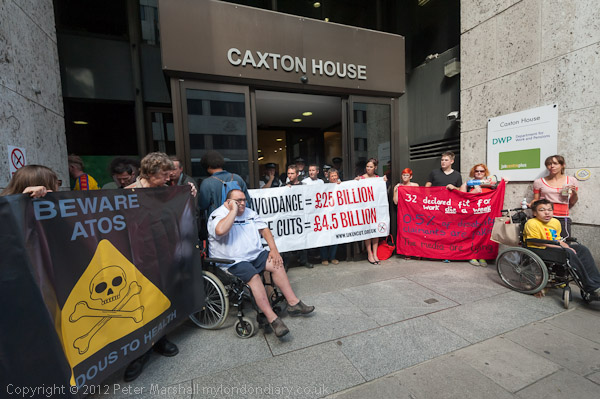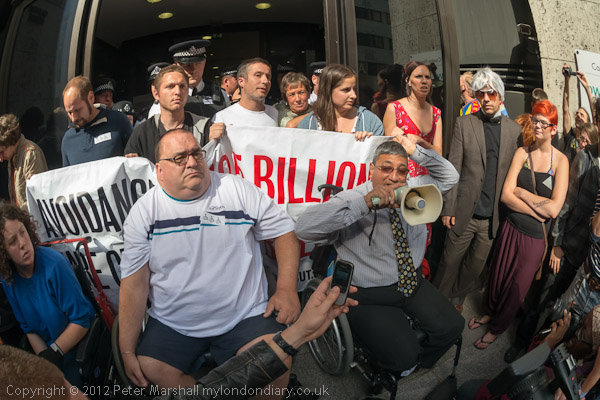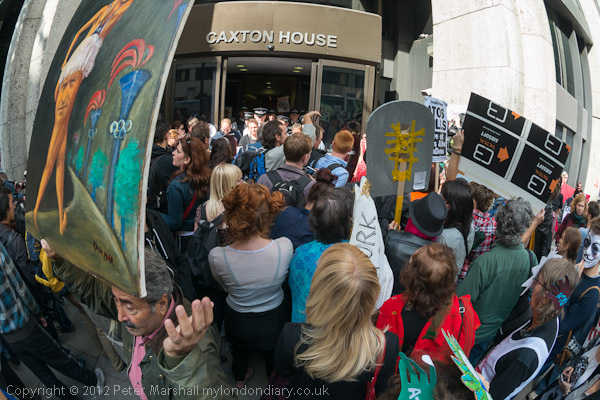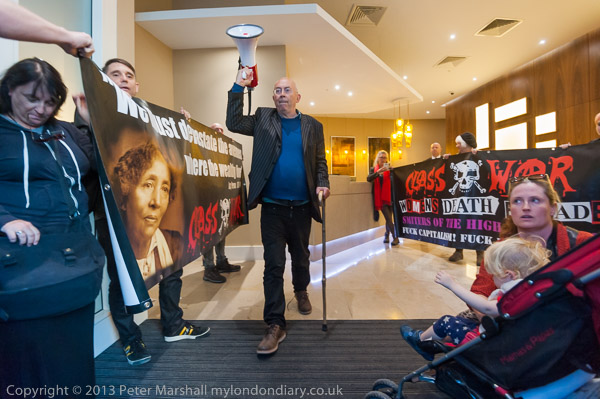
Wednesday 24th September 2014 saw one of the more interesting protests in the long-running series by Class War at the tower block of One Commercial Street which has a plush foyer with a 24hr concierge for the residents of the expensive private flats in the block on Aldgate High St, but social housing tenants in the same block are denied entry here and have to use a small door into an empty passage from an alley at the side of the building.
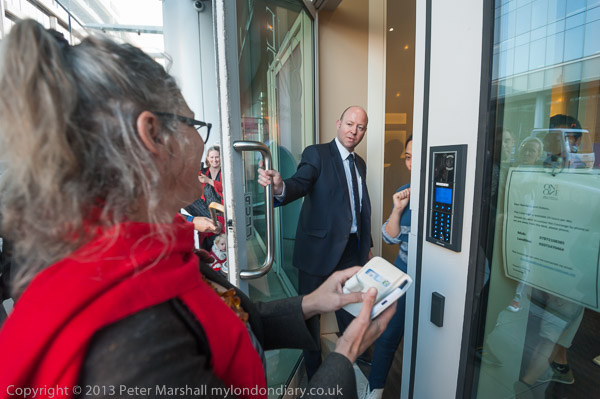
Developers of new housing in London are generally required to provide a small proportion of social housing in their schemes, though they often find legal ways to reduce or even eliminate this, either by building separate social housing blocks or paying others to do so, or simply by pleading (often misleadingly) they cannot make high enough profits.
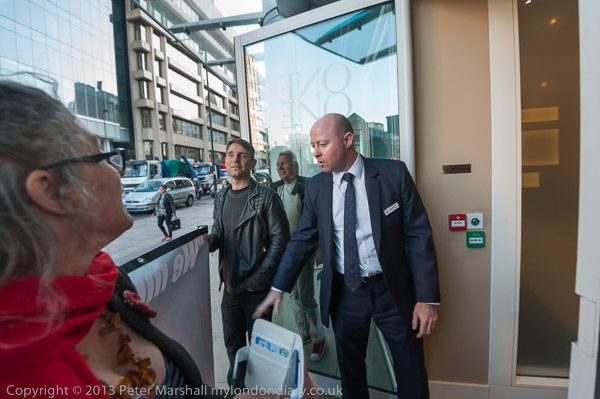
Boris Johnson when London Mayor said he would discourage the use of separate entrances for social housing tenants and Sadiq Khan made clear that there should be a “tenure blind” approach with affordable homes and private homes having entrances that were not distinguishable by quality, type, or location with the goal of “social equality and dignity“.
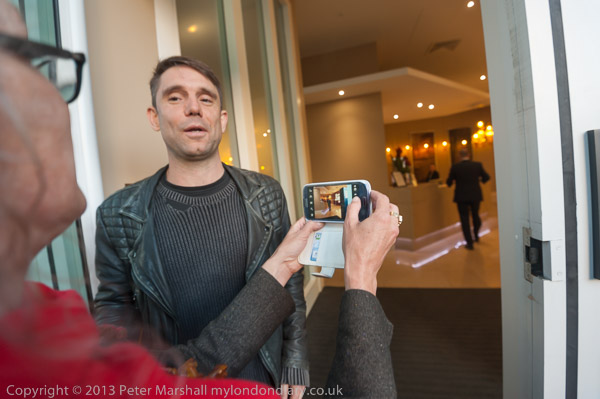
But despite these words, new developments continue to feature separate doors in what activists describe as “social apartheid”. And in July 2014, Class War began a series of weekly pickets outside the ‘Rich Door’ in a campaign to publicise and hopefully end the practice.
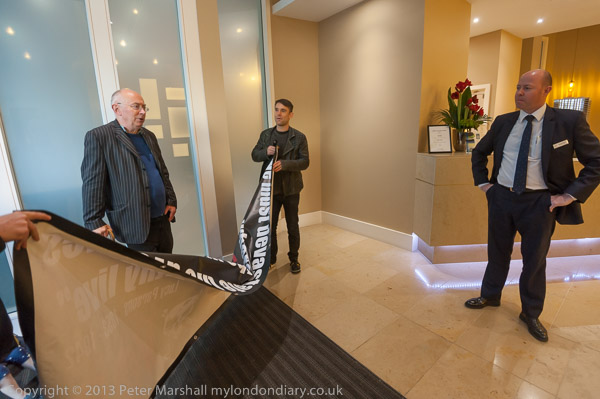
Over the following months I followed their campaign, photographing around 30 of their protests, missing only two when I was out of London. As well as putting pictures on My London Diary and elsewhere on the web I also in 2015 published a ‘zine’ ‘Class War – Rich Door, Poor Door‘ (ISBN 978-1-909363-14-4) packed with pictures from the pickets(still available.)
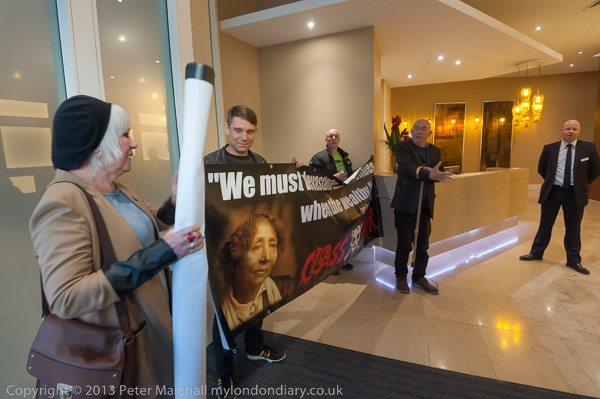
The protests certainly added to the debate about the practice and exposed some of the lies of the developers, but I think there are still separate and very different doors for rich and poor at this and many other of London’s new developments. The protests may also have speeded the decision of the developer Redrow to sell the building to new owners Hondo Enterprises. There were also some minor victories, with the alley getting cleaned up and new lighting installed.
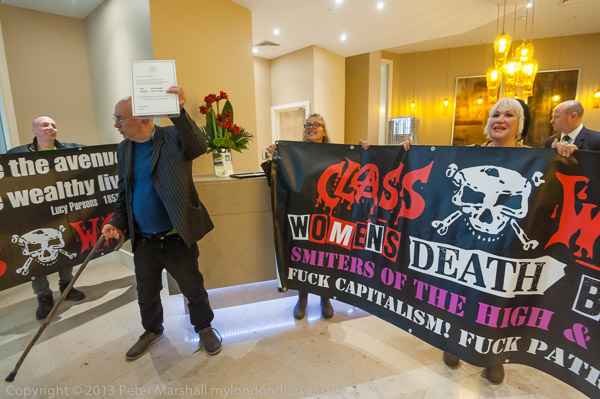
Since then the building, which in 2014 was nominated for the ‘Carbuncle Cup’, has changed its name to ‘The Relay Building’ and there has been considerable remodelling of the ‘rich door’ which now has the separate name of the Crawford Building. The flats served by the ‘poor door’ are called the Houblon Appartments. Despite claims by Redrow that the two groups of flats were internally quite separate I was taken from the rich part and out of the poor door by one of the residents who told me she often took her dog out for a walk that way.
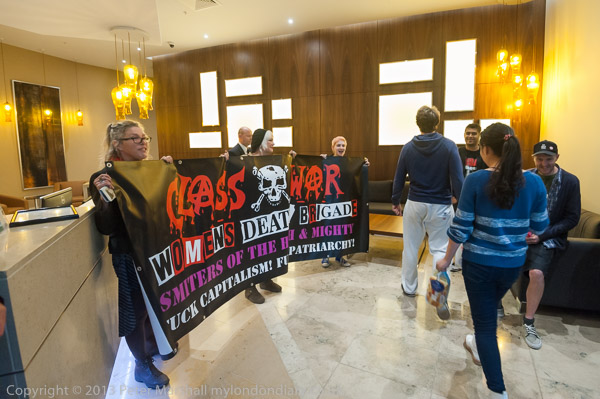
There were no police in evidence as Class War arrived on 24th September and began their picket. When the building manager opened the door to let a resident out protesters held the door open and the manager was unable to close it. He made the mistake of walking away, and several people then walked in with a Class War banner. Others from Class War followed them and made themselves at home in the large foyer.
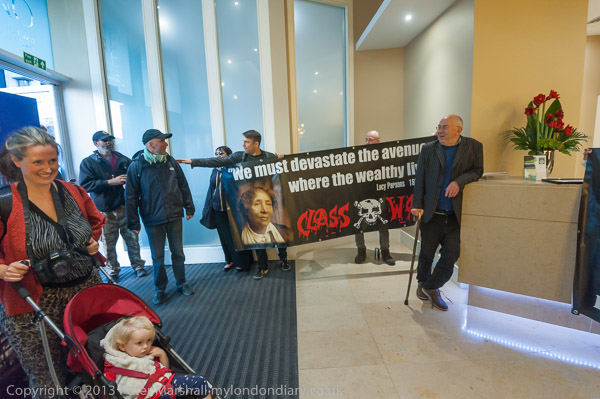
Ian Bone picked up Redrow’s Gold Award certificate from the concierge desk and began talking about it and the separate doors to the building, and about the notice describing the concierge service, comparing this foyer to the bare entrance to the social housing flats, and others too spoke.
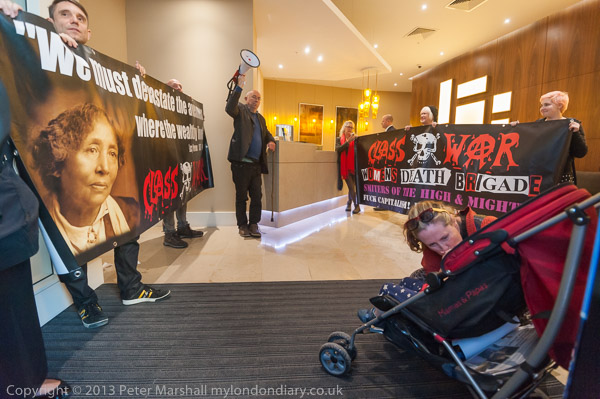
Ian was waving his walking stick around as I took pictures and I was turned away from him when I heard a crash, and I’d sensed a movement out of the corner of my eye. I turned around and saw that the vase of flowers which had been at the corner of the desk was no longer there. I couldn’t be sure whether Ian had knocked them off deliberately or by accident, though I thought the latter unlikely.
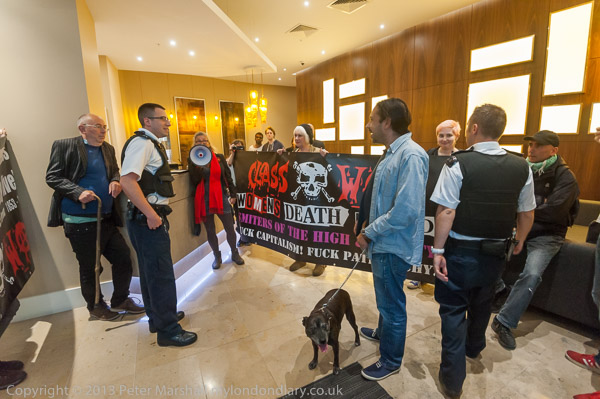
Eventually the police arrived and walked in talking with the protesters and the building manager and asking the protesters to leave. I went out when the building manager requested the protesters to go outside and joined the others who had stayed protesting and watching from outside. More police came and eventually those inside came out and the protest continued there, with several more speeches including a former local resident who was complaining he could no longer live in the area as it had become too expensive.
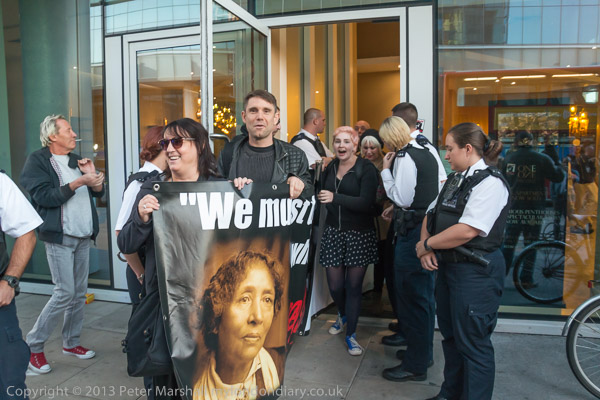
After continuing their protest outside for a while, Class War decided it was time to leave and rolled up their banners and began to move away. A woman police officer then stood in Ian Bone’s way and stopped him leaving. More officers came to surround him and he was led away to a waiting police van which then drove away.
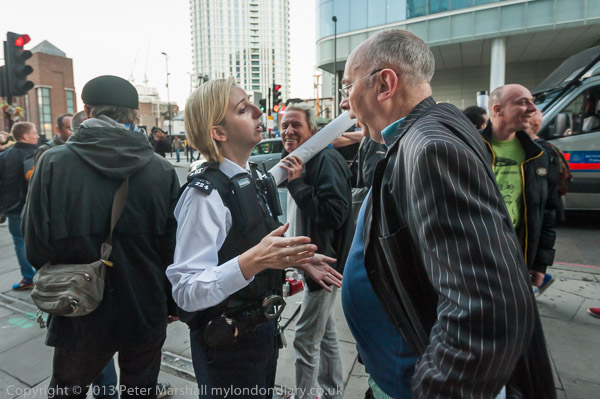
The following week Class War were back again at the Rich Door and I learnt that Ian Bone had been told by police that his breaking the vase had been recorded on CCTV and had then agreed to pay £70 in compensation. No charges had been brought, probably because Redrow wanted to avoid publicity. But Class War had brought with them two very tacky looking vases with flowers to try to give to the building manager.
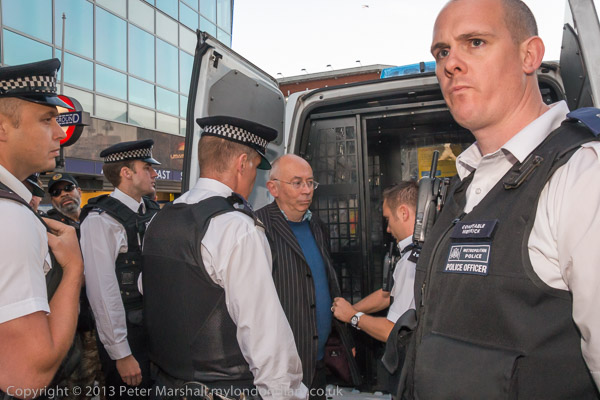
More at Class War Occupy Rich Door
